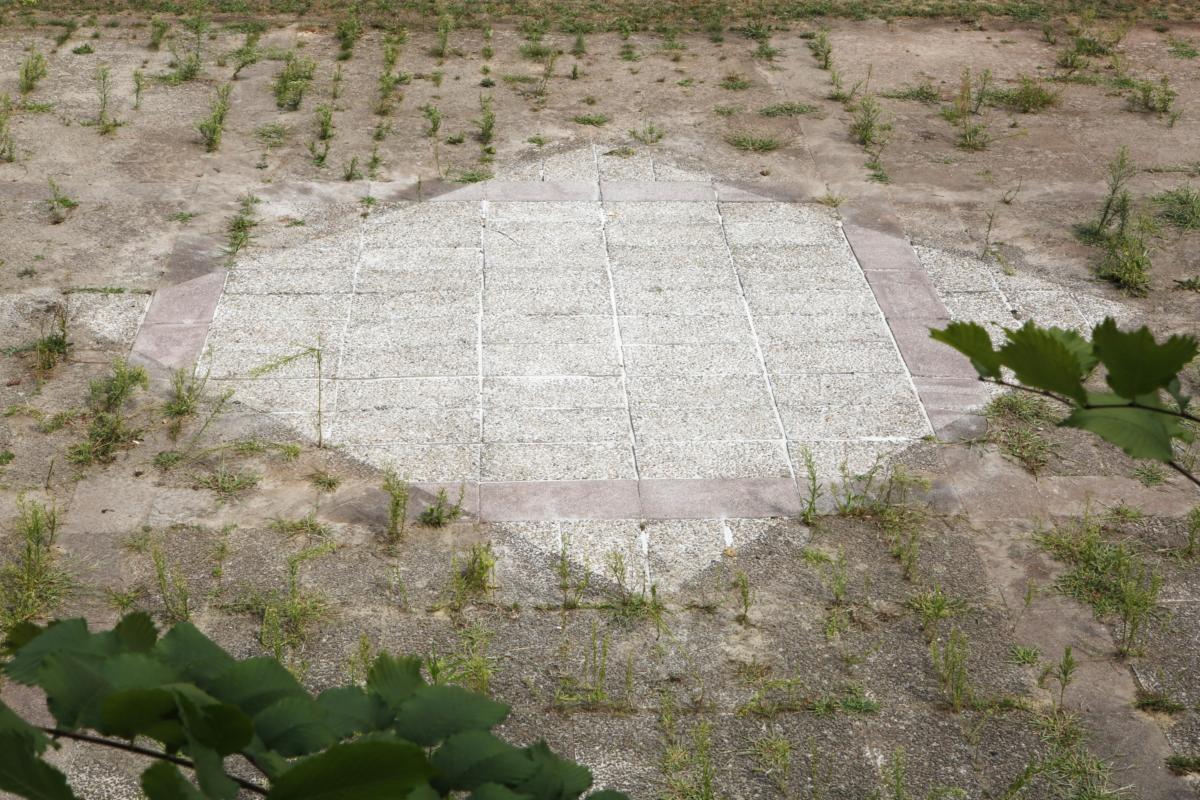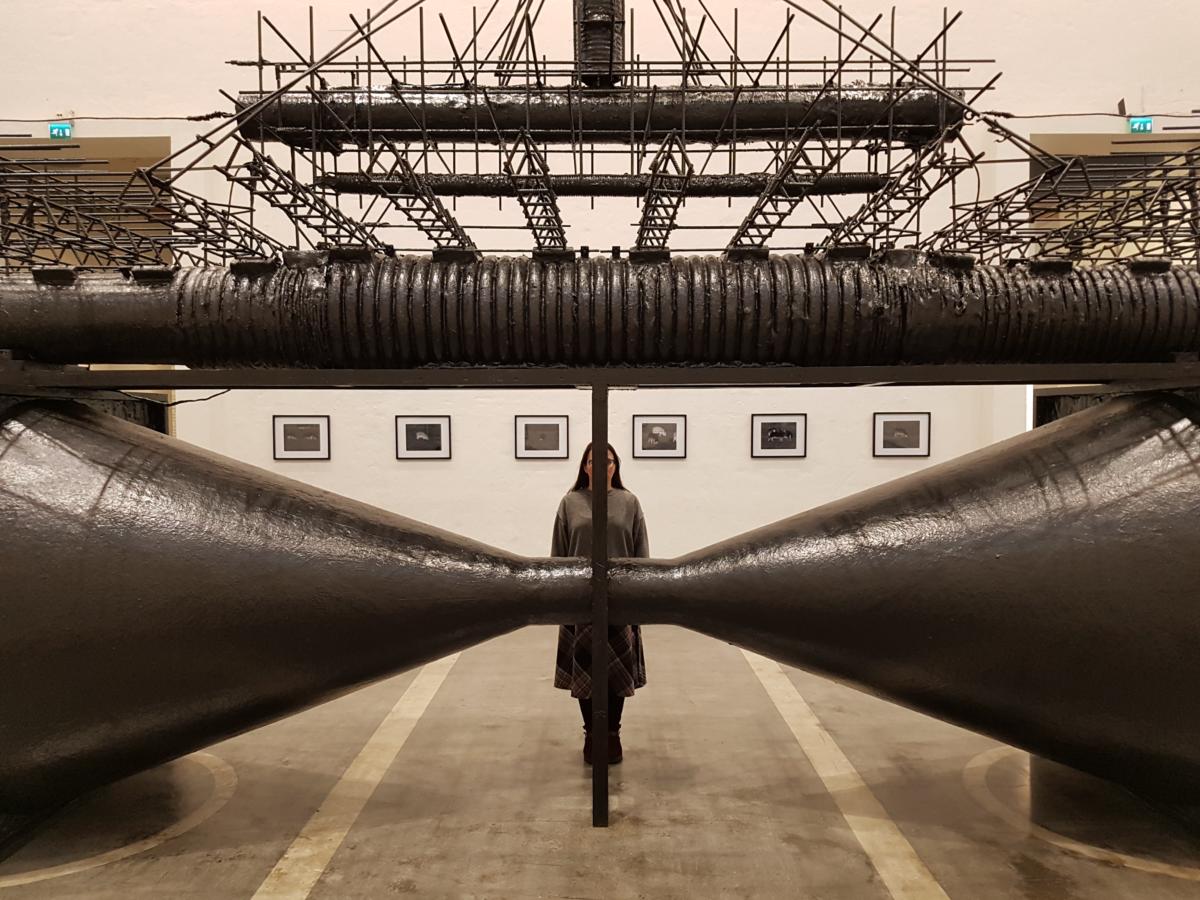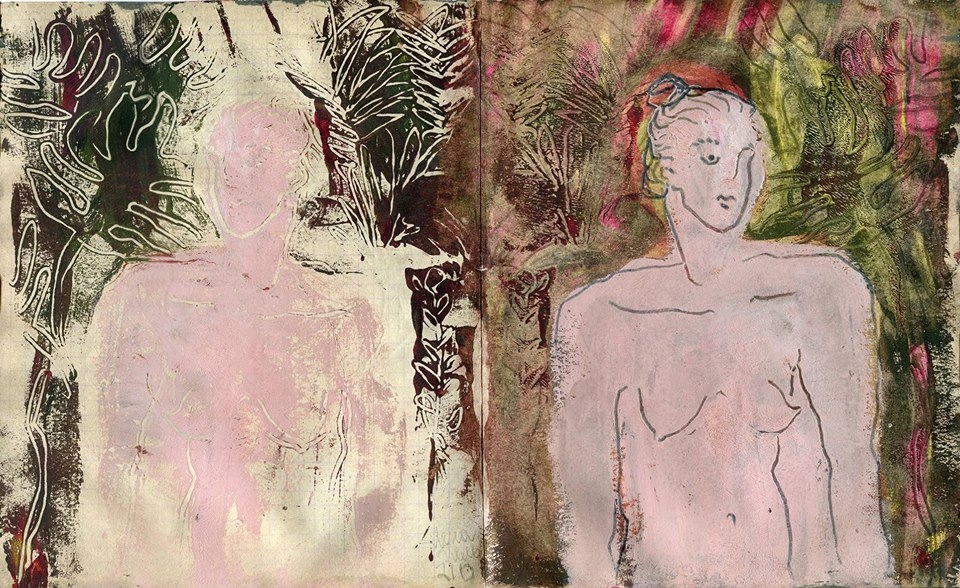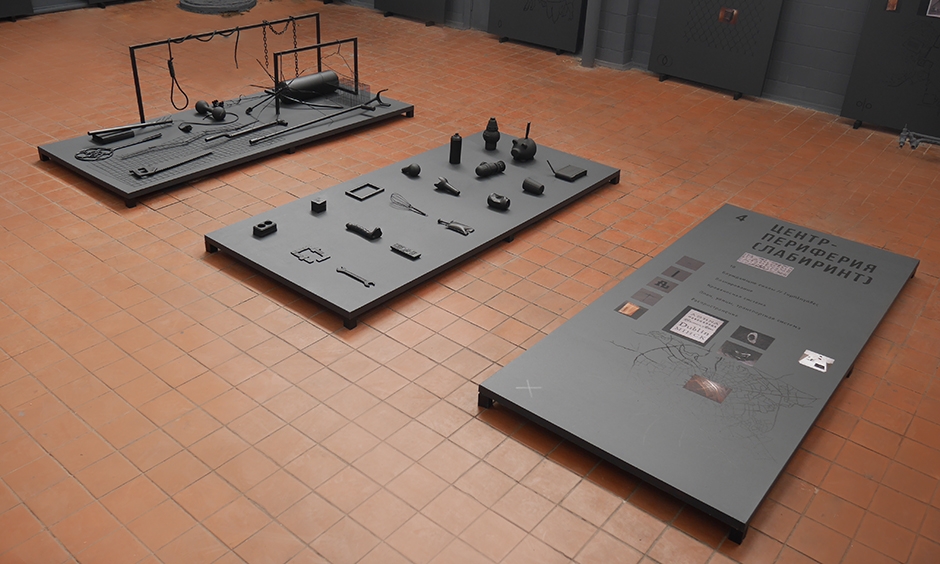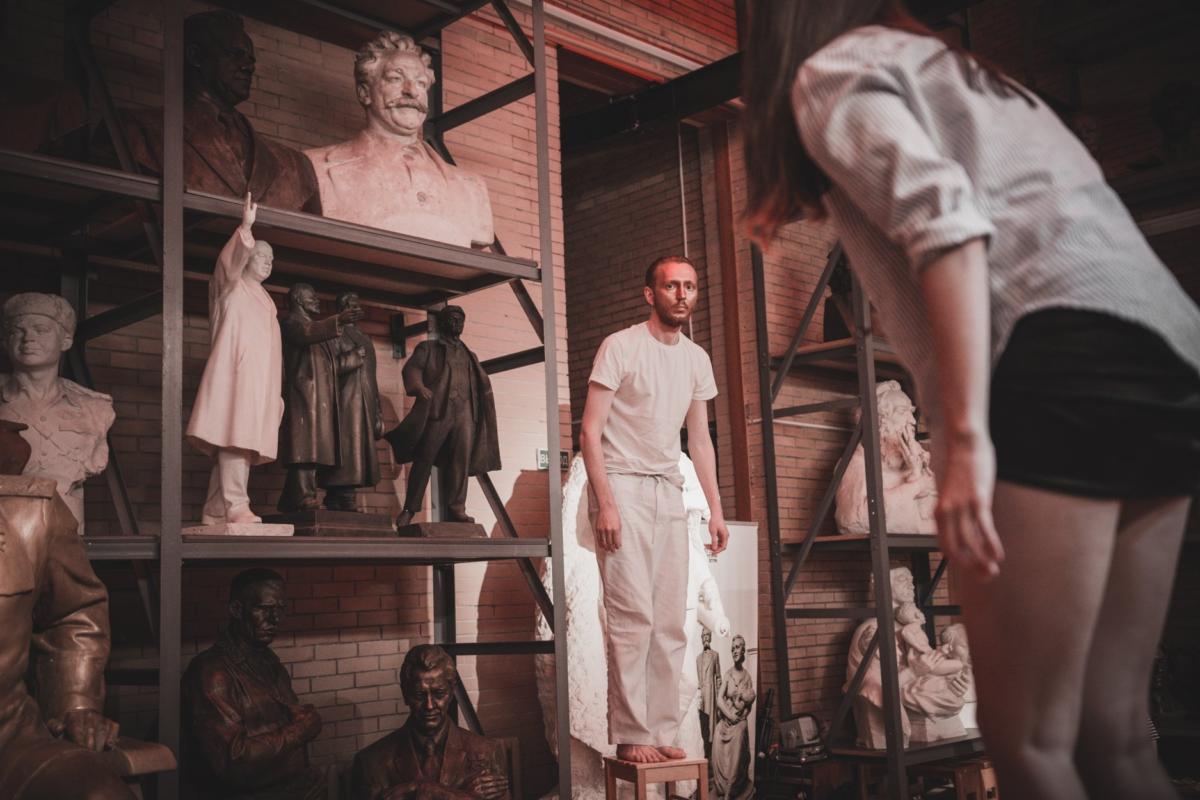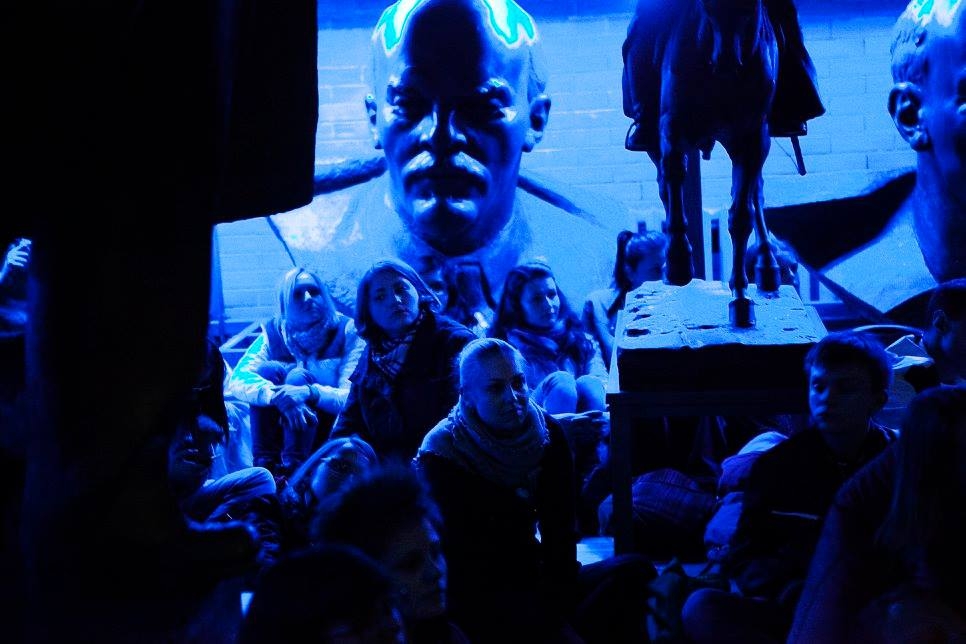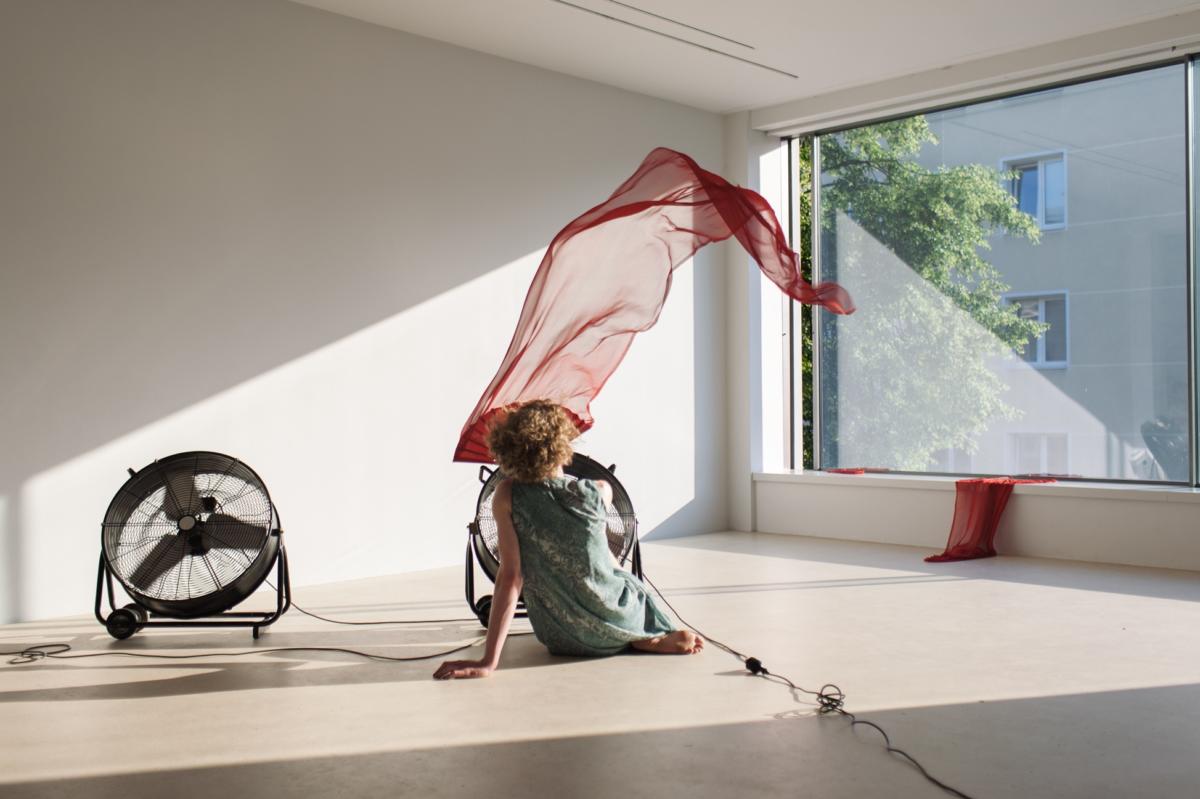The Best and Worst of Art in Central Europe in 2018
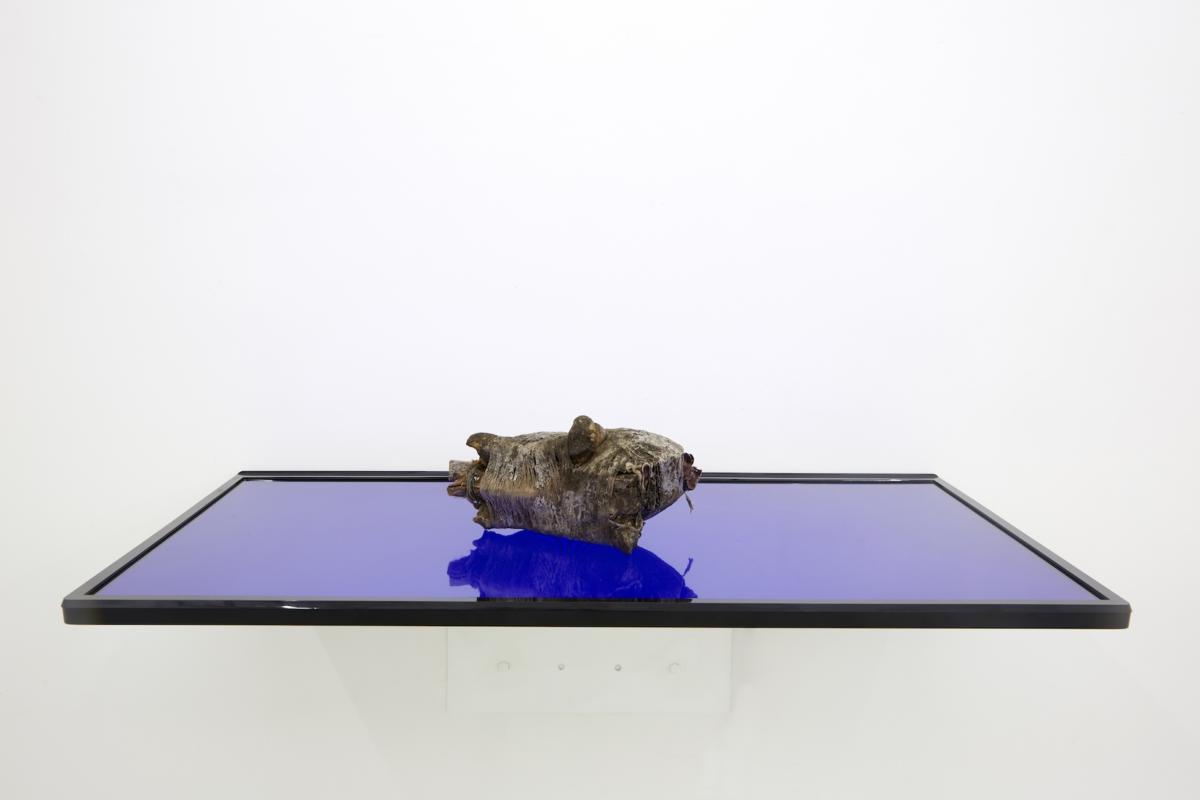
Slovakia
Jana Németh
Artist
Ilona Németh
Ilona Németh is one of the most respected artists of our time; without any hesitation, she mostly focuses on social, cultural and political topics. The exhibition Eastern Sugar, which was held at Kunsthalle Bratislava, was one of her most complex and multilayered “pieces” of work she has done yet. Curated by Nina Vrbanová with assistant Krisztina Hunya, Ilona Németh along with participants including architects Marián Ravasz and studio Plural, photographer Olja Triaška Stefanović and others, she created an exhibition not only about the bitter history of the Slovak sugar industry, but also about our approach to privatization, labor, nationalism and its consequences to the present without any moralization.
Exhibition
Dalibor Bača, Definitively Unfinished, Nová Synagóga, Žilina, curator Ivana Rumanová, guest artist András Cséfalvay
Dalibor Bača placed 24 glass and asphalt towers underneath the dome of the New Synagogue. Those glass towers were fragile and as the asphalt started to melt, the towers collapsed one by one, without any warning or any intervention. After a few weeks, nothing was left– just tons of broken glass and asphalt. This created an image of how fragile the world and ecosystem are and how fragile each one of us is. There are no pictures of the whole installation or the process of its destruction, which was part of Dalibor Bača’s decision and concept. It was only possible to experience it, and it was really worth it.
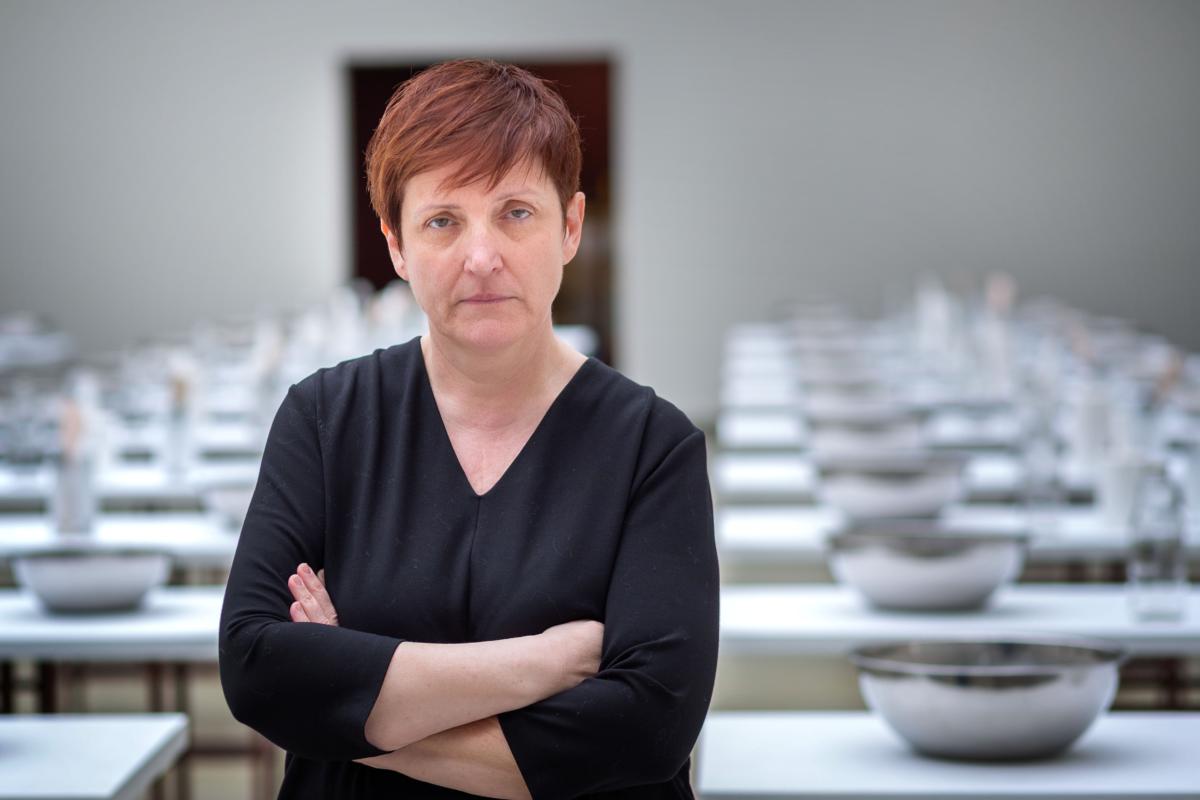
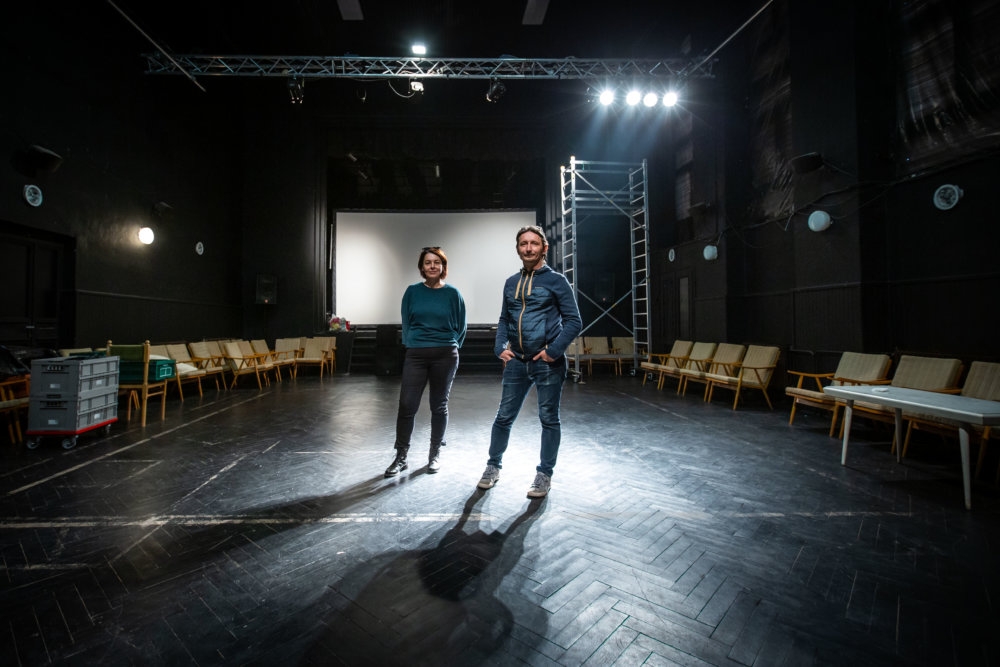

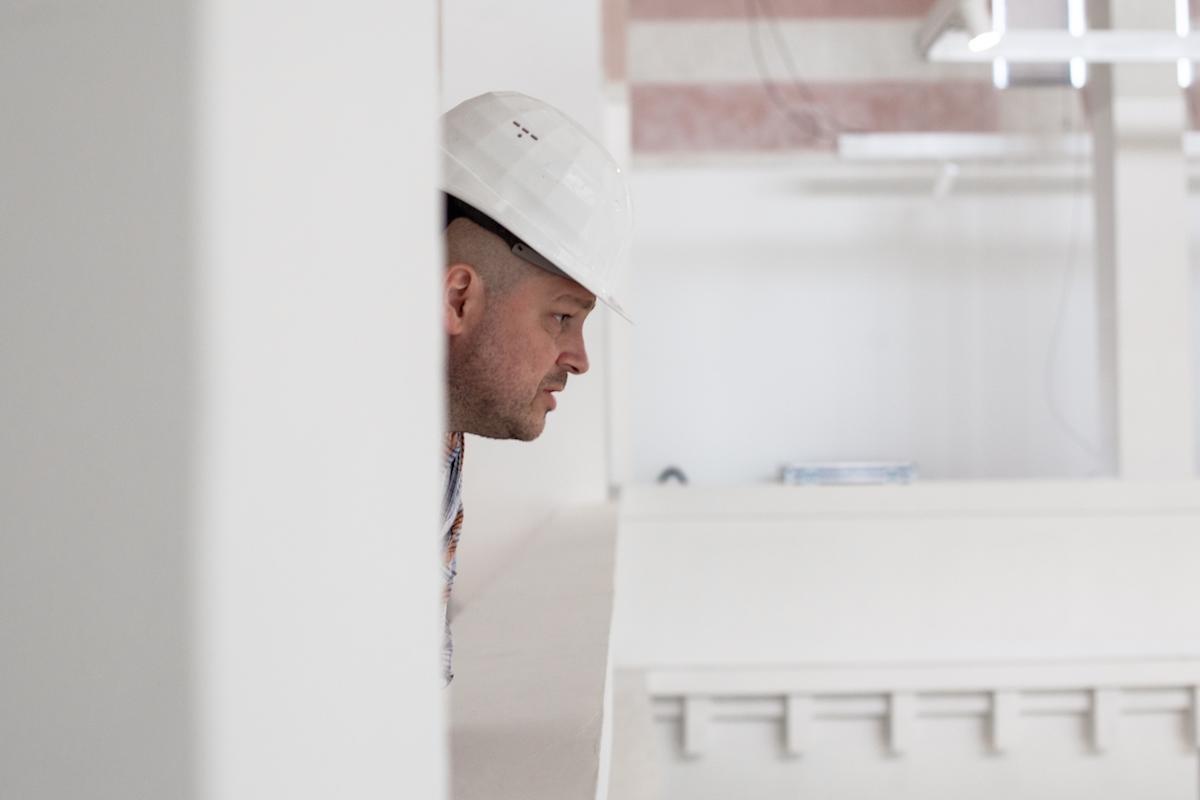
Curator
Henrieta Moravčíková, exhibition Friedrich Weinwurm: New Path, Slovak National Gallery
Friedrich Weinwurm was an avant-garde architect who changed Bratislava in the first half of the 20th century more than any other architect in our history, and yet he has remained almost unrecognized. Historian of architecture, Henrieta Moravčíková, conducted research several years ago, and this was the starting point of a large and complex exhibition about his work, ideas and social circumstances during his practice. She worked with curator Denis Haberland and other colleagues and created an important exhibition about the quality of architecture, urbanism and living in the atmosphere of the ongoing construction boom in many sites in Bratislava.
Place
Theatre Pôtoň, Bátovce
The theatre called Pôtoň is no ordinary theatre. It was led by Michal Ditte and Iveta Ditte Jurčová for almost twenty years. They started to direct and play as amateurs but worked hard, and it became one of the award-winning independent theaters in our country. They refused to move to the capital or even to a mid-sized town and settled in a small village in Central Slovakia. Besides creating dramas, they organize workshops, art-residencies and educational programs for teenagers about critical thinking. And what is most– they are proof that it is worth it to work and live without compromises, though it is not easy.
Disappointment
2018 was very tough in Slovakia and all the cultural events or phenomenon reflected what happened in February. Investigative journalist Ján Kuciak was brutally murdered alongside his fiancée Martina Kušnírová– both were 27. It was a shock. Then the other shock came: tens of thousands people took to the streets calling for justice and for a decent Slovakia. These demonstrations have become the largest since the Velvet revolution in 89. Many artists participated and became voices of democratic (and cultural) resistance against corruption, aggression and cynicism of those who have governed for too long. So this was the worst and yet the best cultural event, which should have never happened.
Czech Republic
Anna Remešová
There are a few important strands in the Czech contemporary art scene dedicated either to decolonization (more attention towards the Roma culture) or feminism (new networks of care and collectivity), but I decided to follow the ecological turn which seems to be slowly gaining strength and attention in the Czech art scene. And it is also a matter of great importance these days.
One of the best places to go to see the exhibitions with ecological themes is (maybe a bit unexpectedly) the Vysočina Regional Gallery in a small city Jihlava where the shows of contemporary art are organized by curator Lenka Dolanová. She has been one of the key figures in connecting ecology and art for many years, e. g. every year she puts together with other organizers the Rur ArtMap, which maps artistic and ecological initiatives outside the main centres of Czech Republic and Slovakia. In 2018, she prepared a show called How Forests Think. Even if the works exhibited in the realm of this show still stick to some kind of an idea of aestheticization of nature and use artwork as a tool to visualize it, or even if shows like these don’t bring super difficult notions such as cthuluscene or platform capitalism, they are nevertheless necessary for local contemporary art scenes as they are teaching the visitors how to change their approach to other living forms and organisms.
Nevertheless one of the best exhibitions that occurred this year was the Civilization at the Crossroad: Engineers of Scientific-Technical Revolution curated by the artist Pavel Sterec and philosopher Lukáš Likavčan for two Prague galleries: Display and FUTURA. A very rare – in the context of the Czech art scene – form of a group show with newly produced artworks based on an artistic and interdisciplinary research dug out of a research project from 1960s about the idea of the so called “scientific-technical revolution”. The exhibition not only shows the roots of today’s extractivist logic of capitalism but also pinpointed some parallels between the thinking of the reformist socialists in 60s and contemporary philosophers.

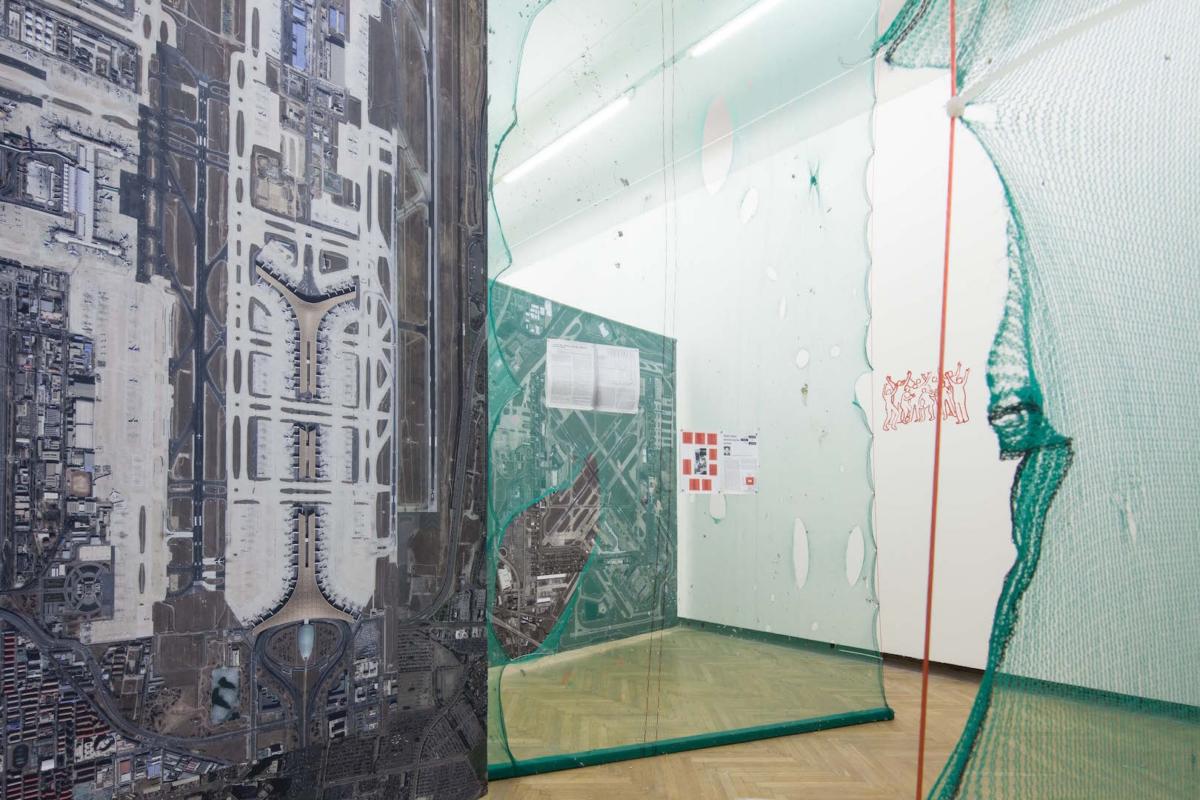

Two books were published: České umění ve věku environmentalismu 1960–2000 (Czech Art in the Age of Environmentalism 1960–2000) by curator and theoretician Ondřej Navrátil and a bilingual anthology Landscape in Focus (ed. by Pavel Mrkus). The second book is a result of one long-term art project called Frontiers of Solitude that was focused on the post-industrial landscape and its transformations.
To indicate the worst event is quite hard because there are so few shows and events within the ecological theme so I would rather point out the fact that thanks to the growing ecological interest the Czech art scene is finally becoming more politically urgent or conscious. These growing activities, which also allow for the creation of new forms of social organization and contemporary art, offer a truly social profile, as it was obvious during the summer Climate Camp where also a few artists took part in occupying the coal mine or created art pieces criticizing (besides other things) the impact of the current economic system on the environment (the project was called Art for Climate curated by Lenka Kukurová).
Piotr Sikora
Artist
There won’t be just one above all! During 2018 it was a pleasure to observe and follow practice of these (female) artists: Kača Olivová – who took nudity to the next level.
Barbora Kleinhamplová for the cruise on an open sea of late capitalism, Anežka Hošková for keeping it beautifully dark, duo Barbora Fastrová & Johana Pošová for joy of creation, Adela Součková for gentle and profound reinterpretation on folk tales and Harvesting Darkness for a great show at Futura.
Curator
Michal Novotny, OK that doesn’t surprise you right? Well guess what, Michal did surprised everyone in the end of this year with a very controversial transfer from Futura to the National Gallery (yep the same one he had harshly criticized two years ago). Accelerated curators who seem to make more shows than one can handle gave birth to several dense and exquisite exhibits (three editions of Orient, a big part of Plato’s cycle – Temporary Structures or solo shows by Olof Olosson or Slava Sobotovičova at Futura) and some where we could ask whether the curator was present at all (just to mention solo shows by Jiří David in Futura). If this category comes with the biggest number of the shows – no doubts it fits him.
Honorary mention – Alžběta Bačíková and Anna Remešová for a great cycle Politics of Truth at etc galerie.
Katarína Klusová for courageous and worthwhile program of Třinec city gallery.
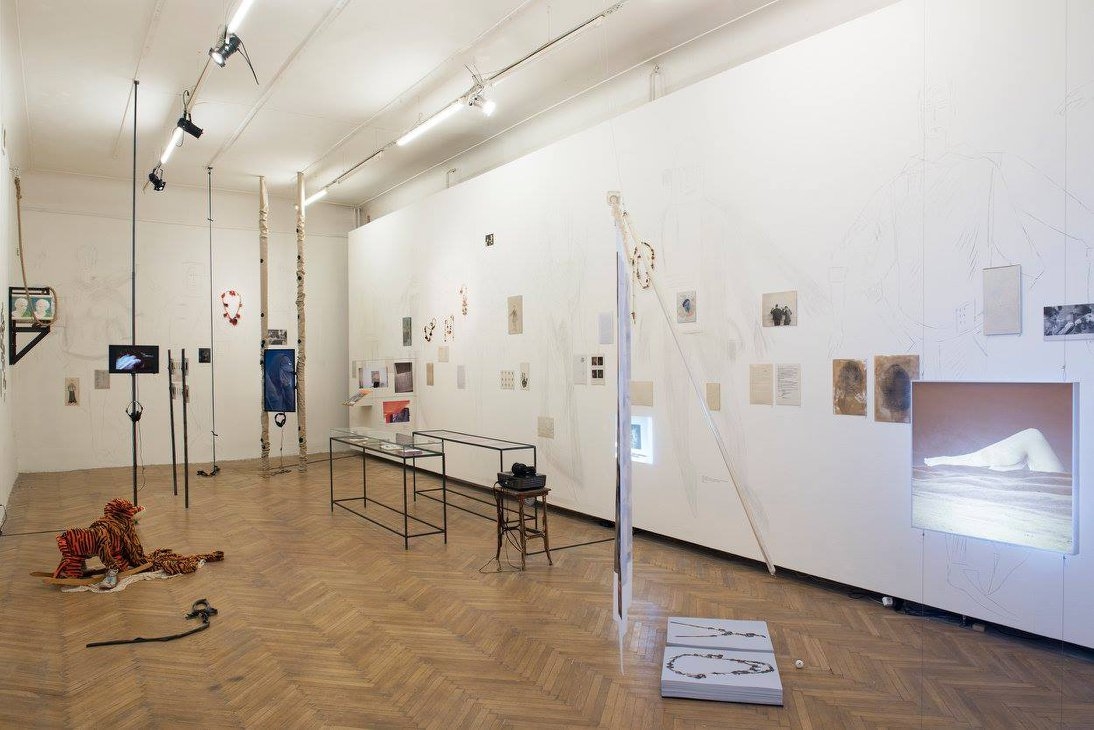
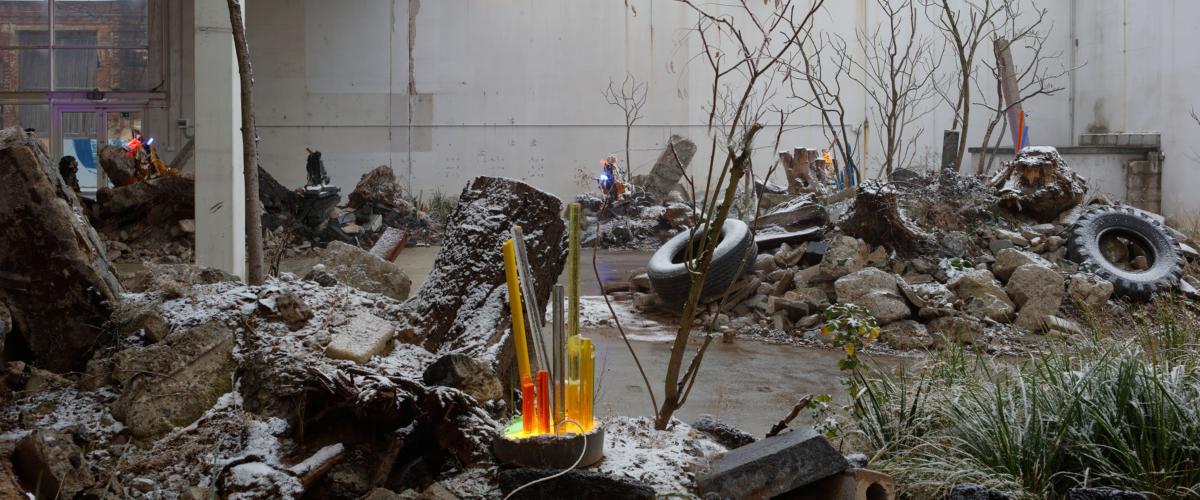
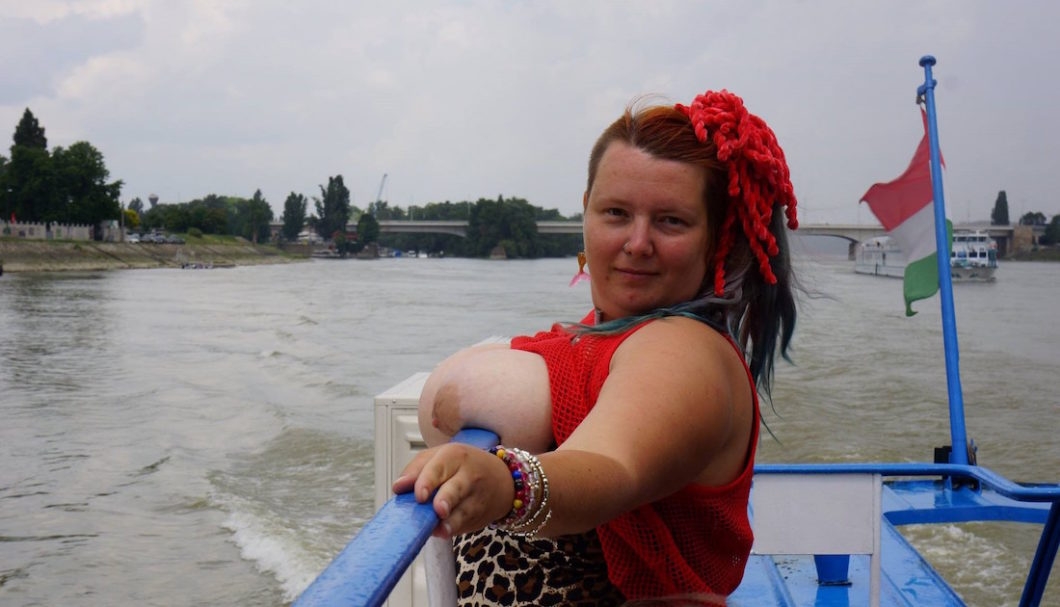
Exhibition
I really enjoyed the exhibitions in Display Association for Research and Collective Practice run by Zuzana Jakalová and Zbyněk Baladrán – a duo that claim to not be into exhibition making (yeah right!). During 2018 you could see their superb shows dedicated to legendary Ester Krumbachová, take a bite of psychedelic jelly brains at Multilogues on the Now or explore art from South America at The Shores of the World show.
Honorary mention – History of Dimensions (lousy title but great show by Antonin Jirát at newly open gallery Stone Projects).
Place
Feminist (Art) Institutions or to be more precise the cosignatories of the Code of Practise formulated by Tereza Stejskalová from Tranzit.cz in cooperation with Ewa Majewska, Xabier Arakistain, Giovanna Zapperi and Luba Kobová. In a few words – Code of Practice propose self-criticality and horizontal structures for (caring) art institutions, no superstars and no macho bullshit. So far we have gathered almost a dozen of project spaces following the Code.
Honorary mention – Plato – isn’t it great to occupy 5000 m sq of the former Bauhaus store and put meaningful art into it?
Disaster
Two bad reviews on Slav Squatting and Its Discontents show! I knew Czechs aren’t very into the exploration of their Easternness and vodka drinking but blaming good old Slav Squatt for that it’s too much!
Hungary
Flóra Gadó
Artist(s)
It was great to see the complex and coherent solo shows of several emerging Hungarian artists. These exhibitions were characterized by new works from this generation that moved a step further through experimentation and the development of style, and yet the artists continued using their previous, though interesting, visual language. The solo show of Zsolt Molnár in Kisterem, Kata Tranker’s at Parthenón-fríz Terem or Viltin Gallery and Sári Ember’s exhibition in Galleria Campari, Milano, in which she moved further from photography towards stone and ceramic installations, underlined the fact that we have to keep an eye on these artists.
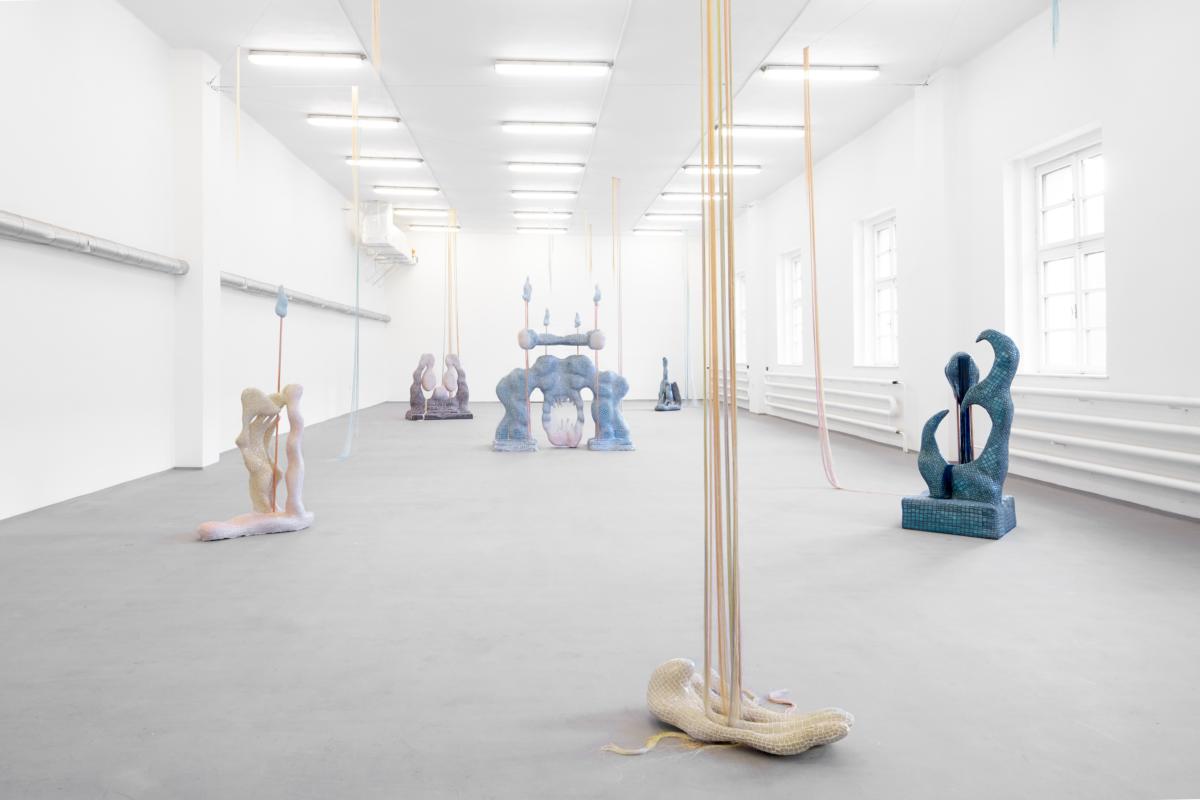
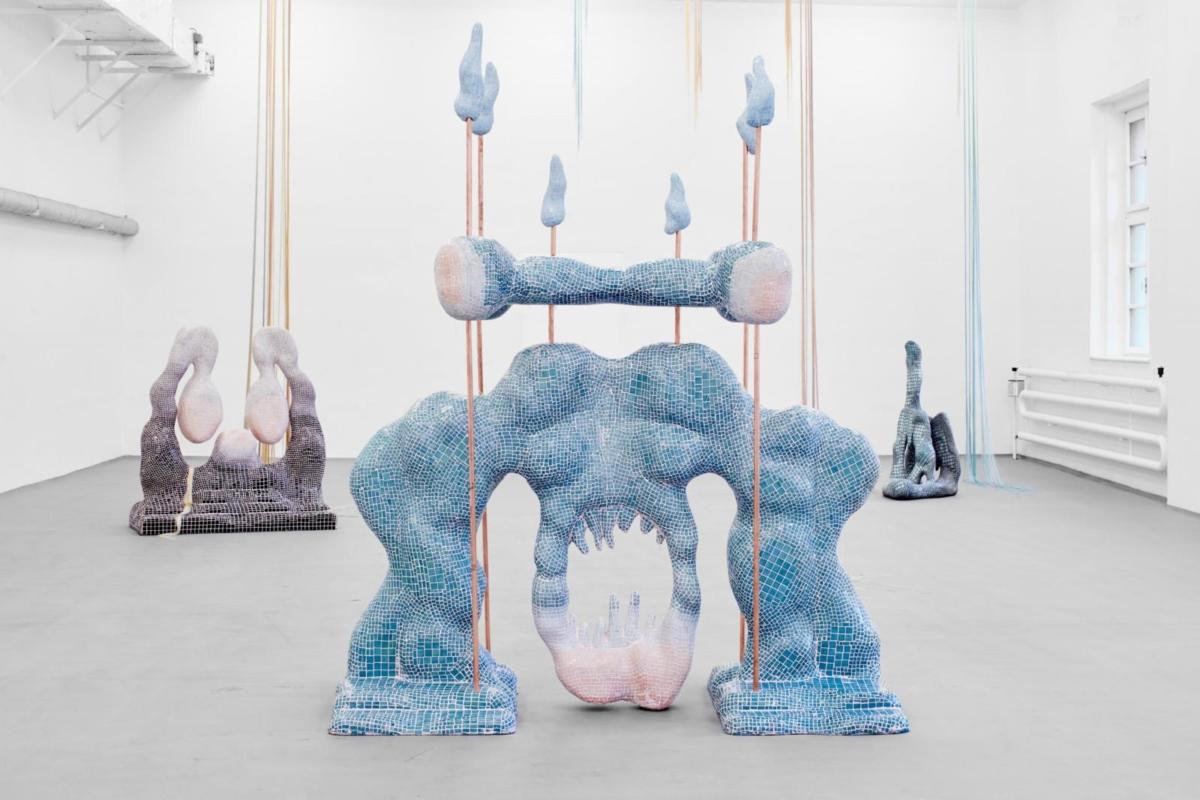
And for Zsófia Keresztes, the year 2018 was a real triumph: the artist developed her strange, often disturbing yet visually beautiful objects further to create large-scale installations, evoking notions of hybridity, ornamentally, cannibalism, etc. Her recent solo shows at Karlin Studios (Prague), Gianni Manhattan (Vienna) proved that her works are unique in the word’s classical sense: she uses an artistic language which somehow describes our present’s grotesque ambiguity very well. Even though one can see the influences of other artists on Keresztes works, it is hard to find something like this in the region. It is not by surprise that her works were included in such group shows like Orient (curated by Michal Novotný) which focuses on the most important artistic tendencies in the Central and Eastern European region.
Exhibition(s)
Exhibition wise it is very difficult to highlight what was the best in 2018 in Hungary. A truly important exhibition was Ádám Albert’s Everything is Ours in Kassák Múzeum. Albert’s exhibition took the 1st of May of 1919 as it’s starting point – when the whole city of Budapest turned into some kind of stage – in order to examine the aesthetic (decorative, ornamental) and architectural approach of a certain kind of ideology. The artist does not intend to analyze historically the period when, for 133 days, the Communist Party ruled Hungary, but he sheds light on the aesthetic regimes and their connection to the power structures of the past. It is not surprising that the exhibition did not escape the government’s eyes, and one of its newspapers, Magyar Idők attacked it by saying that the exhibition praises the “communist sins”.
Bringing Naeem Mohaiemen’s Two Meetings and a Funeral, a three-channel video installation, to Budapest (precisely to the main hall of Vasas Federation of Metalworkers’ Union, as the building hosts tranzit.hu’s new office) almost straight from the Documenta14, was another highlight of 2018 (curator: Eszter Szakács). The two projects were linked together as they both analyze forgotten, repressed or in the case of Albert, ambiguous leftist (communist, socialist) heritage and periods. In Mohaiemen’s video, the focus is on the sixties-seventies, and it sheds light on the Non-Aligned Movement’s different aspirations, plans and perspectives. It is rare to see in Budapest such a complex video installation which is based on the artist’s thorough research, and I think its also crucial for us to learn more about the triumphs and failures of the so-called Third World, about which we don’t know a lot, despite the fact that there were many connections (students who were studying here, solidarity movements) with Eastern-Europe as well (as this exhibition shows for example).
Curator
Borbála Szalai just became the head of Trafó Gallery (her predecessor Áron Fenyvesi could also be on this list). On one hand, her projects in Trafó were outstanding in their complexity – for example The Intention of Things, which dealt with the so-called Object Oriented Ontology from a new perspective and was further developed some months later in Bratislava in Krokus Gallery, titled Every Other Thing, in which it was notable how the previous concept changed and how new artists were added to the show. At the end of the year, she was the curator of Peter Puklus’s very personal yet monumental show in Glassyard Gallery, which dealt with the notion of home and parenthood. Yet for me the most important show was the performance lecture series Thought Sculpture Szalai curated at Trafó Gallery (for many years now), which introduced this not so well-known genre to the Hungarian audience and invited artists and researches, like Christina Varvia from Forensic Architecture, Alex Mirutziu, Andy Holden, together with great Hungarian participants (Dominika Trapp, Lőrinc Borsos). This experimental format had no clear rules or strategies, and that is precisely why I found it important to curate and present this series, which moves out of the gallery space and introduces artists and their projects with performative methods.
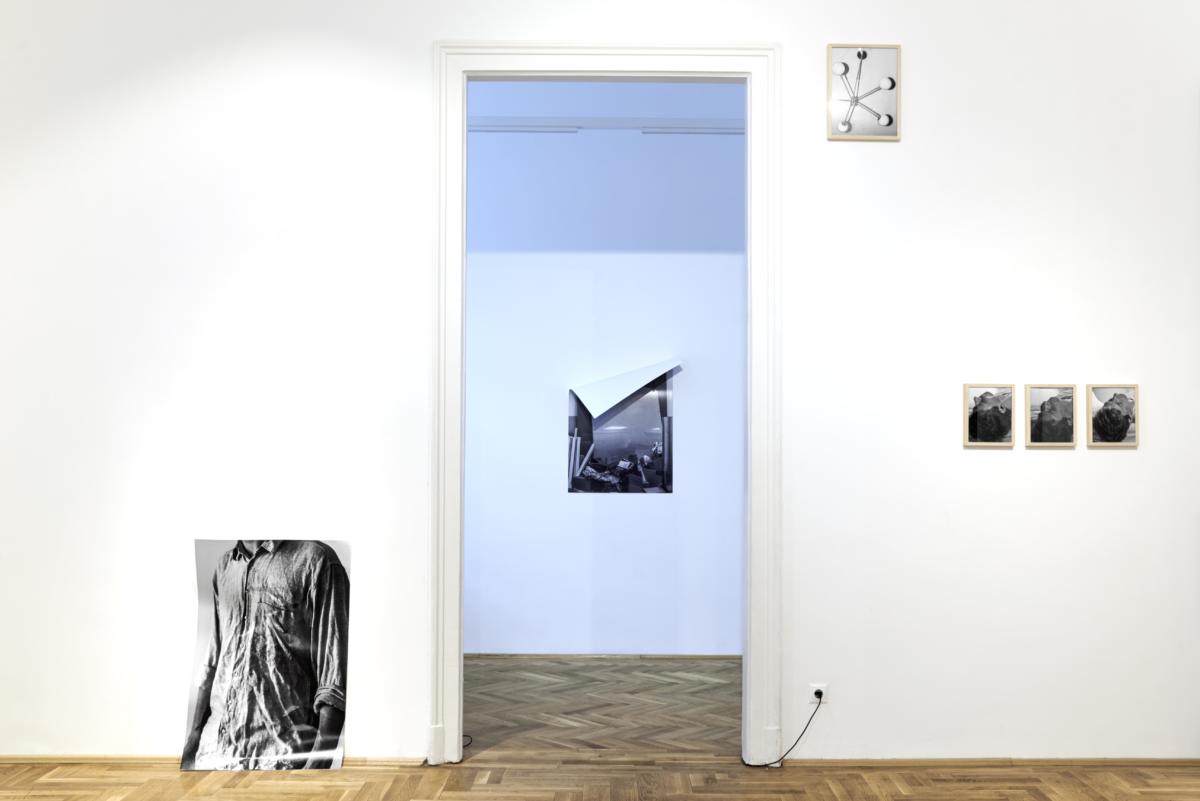
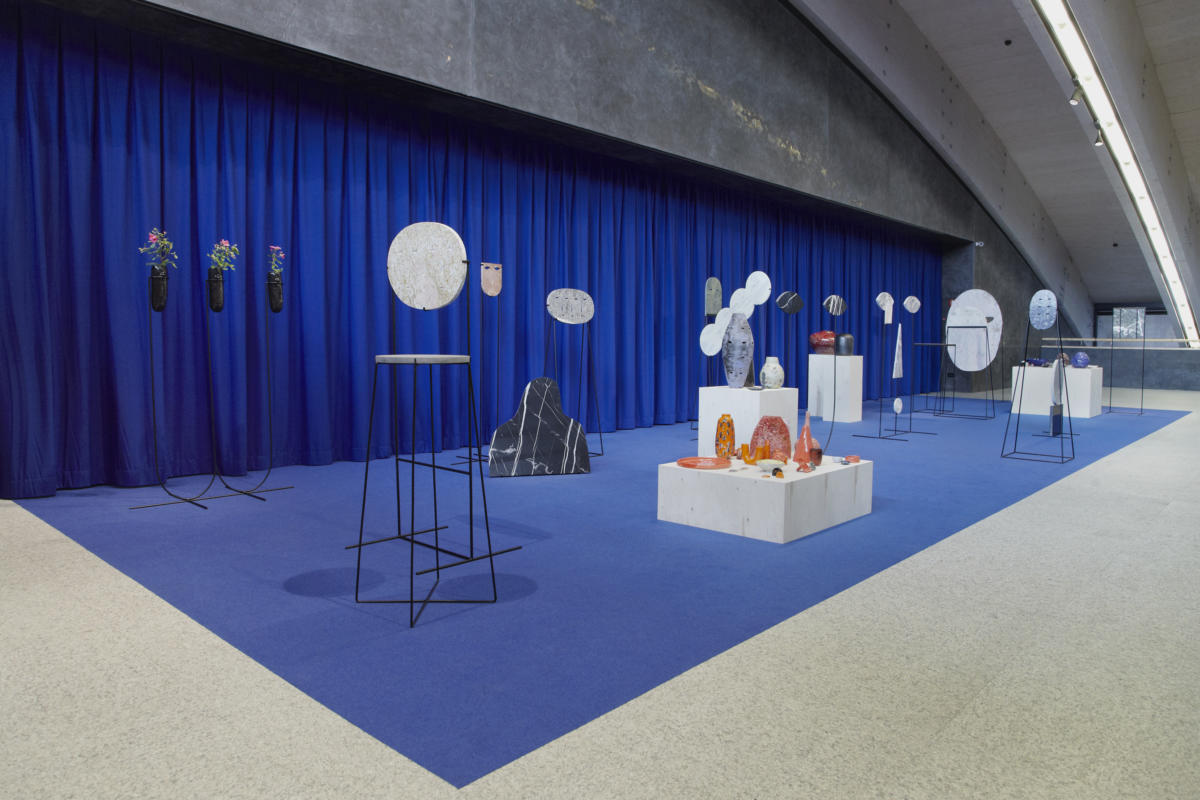
Place
It is good to see how many new initiatives – artist-run spaces, small non-profit thematic galleries – pop up in Budapest and how certain events, like Küszöb Festival, which focused on early-career artist’s possibilities, work together with them. One important initiative which started in 2017 but found its final form this year, is the bookshop, gallery space ISBN. Run by Bea Istvánkó it really fills in a void in Budapest – you can find artist books, catalogues, theory, zines and many other kinds of literature yet ISBN also functions as an exhibition space and community place. First, the exhibitions focused more on the relationship between art and literature, the notion of archives, libraries and books in general, but now it also showcases other more experimental projects and events, like portfolio consultations for artists and curators or events for other literary associations, etc. One could just hope that these kind of places will last long in Budapest.
Disappointment
As the rule of law in Hungary is falling apart, it is difficult to determine what was the worst event, as it seems (and it’s true) that everyday something is happening. In terms of culture and cultural policy, besides the diminishing support for public institutions and the constant struggle to find aid, the fact that CEU (Central European University) is being forced out of Hungary is a truly dreadful situation, which many of us never thought could happen. Academic freedom goes hand in hand with cultural freedom, and the fact that the government did everything to destroy a university is a bad sign for the rest of the educational and cultural sector.
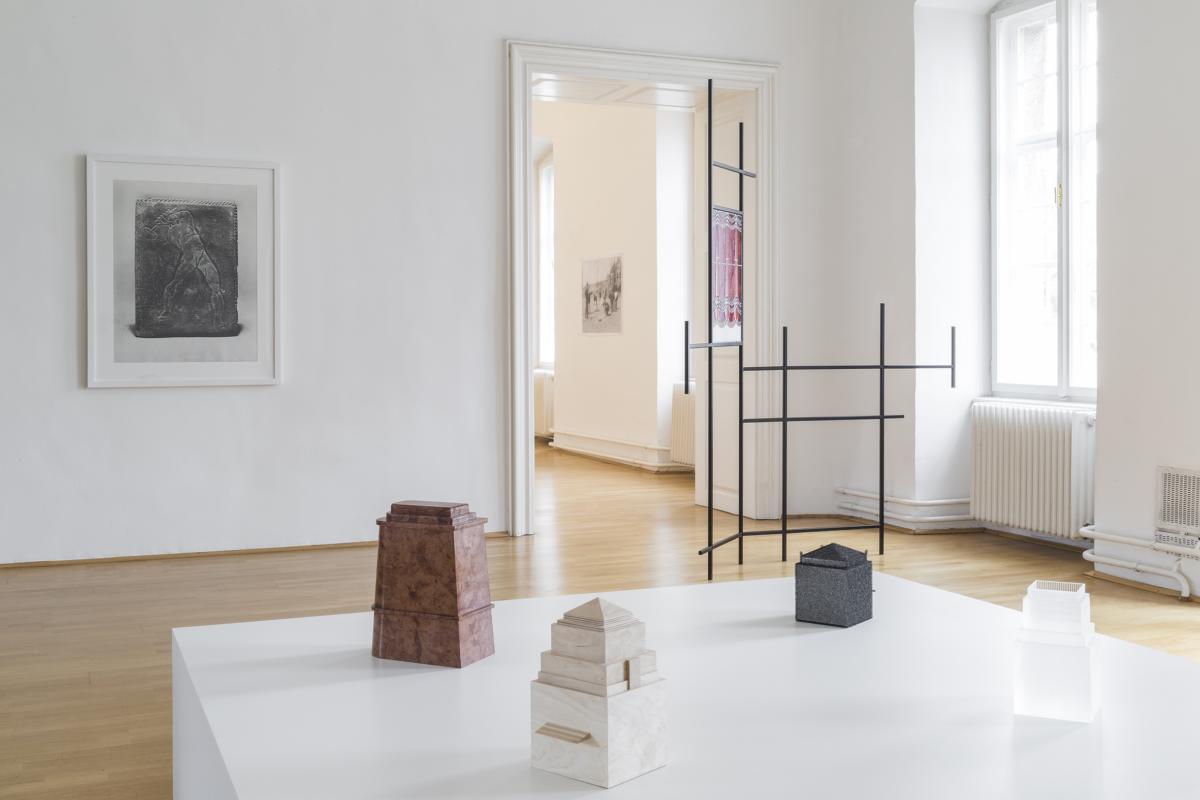
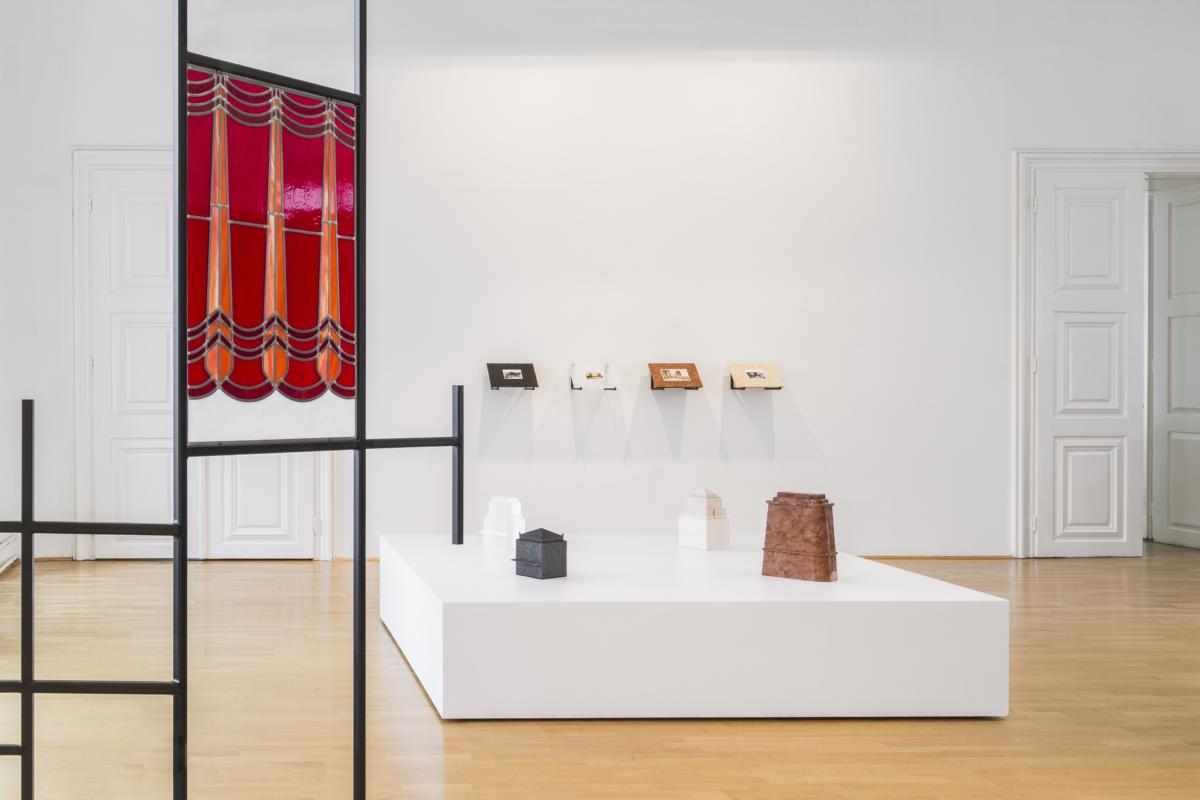

Berlin
Vanessa Gravenor
Though Berlin still boasts a lot of the same trends as it did in 2016 and 17–that is post-internet art and glorification of advertisement and bondage aesthetics–2018 saw some shifts in the exhibition landscape. Many artists and exhibition programs addressed the local political turmoil that the German capital faces daily, such as the presence of the Afd (far-right political party) in parliament; anti-immigration, neo-nazi rallies in the city as well as Chemnitz and Dresden; and rising rent costs produced by creative tech industries. A particular turn was represented by the 10th Berlin Biennale, curated by Gabi Ngcobo, which distinctively contrasted the 9th, curated by DIS. Instead of archiving the internet self and using slick hyperbole as critique, the Biennale titled We Don’t Need Another Hero tackled questions of racism that is every present in Germany today. Some notable commissions were Simone Leigh’s film, Untitled (M*A*S*H), 2018, a video that followed different black female protagonists who thematized and discussed life as women of color in Germany, as well as Mario Pfeiffer’s Noch Einmal, a video that took on the speculative tone of a forensics crime series to talk about the real world death of Shabaz Saleh Al-Aziz, who was an Iraqi refugee who went missing and was found dead some days after a violent altercation with conservative white Germans in the former East-German city of Arnsdorf. 2018 also saw artists turn more to collective work, activist tactics, and curatorial projects. As gentrification and the Wohnungsfrage (living question) become the most widely discussed topics within Berlin, with a demo in April 2018 attracting 15,000 protesters, artists have come together to work with one another to combat irreversible changes in the city. The following presents 2018 in review with these changes in mind.
Artist
Emilija Škarnulytė at The Institute for Endotic Research (TIER)
In December, I saw a performance by Emilija Škarnulytė called Remote Sensing. Škarnulytė is a Lithuanian artist from Vilnius but has lived and worked in Italy and Scandinavia. She is based in Berlin and Tromsø. The performance was at the project space Tier in Neukölln, which was initiated by Benjamin Busch and Lorenzo Sandoval– a space that I’ve been following since its opening in June 2018 and which favors performative encounters rather than static exhibitions.
Škarnulytė’s work has been circulating around Berlin for many years. She was an artist in residence at Kunstlerhaus Bethanien in 2017 and had a solo show this same year at a project space called Decad, which is also in Neukölln. I narrowly missed one of Škarnulytė’s performances in Athens in 2017 when she was notably sporting a mermaid tail– an excerpt from work related to her video Sirenomelia (2017) that documents the artist swimming with a mermaid’s tail through a former Cold War submarine base above the arctic circle. The video was recently on Vdrome in early December.
Škarnulytė’s performance at Tier was about remote sensing scanning technologies and the renderings they make of space, particularly within uncanny decaying architectures of old Nuclear test sites or CERN’s former laboratory. The performance consisted of the artist vjing renderings and also computer distorted readings of theoretical texts, which in themselves commented on the topic of scanning and remote sensing. Unexpectedly breaking with the slick aesthetics of technology and computer-generated images, the artists also sang Lithuanian folk songs.
Curators who work with performance archives and perform the archive
In 2018, I wrote about a number of interesting curatorial projects, and in retrospect, what they have in common is the archiving of past and present performative practices. For Blok Magazine, I wrote about Zofia nierodzińska’s exhibition “The Romantic Adventures of Beth Stephens, Annie Sprinkle and Breast Cancer”. nierodzińska, who used to be based in Berlin, is the deputy director of Arsenal Gallery in Poznan. The exhibition, which consisted of a series of queer role playings that embraced kitsch and laid bare Sprinkle’s own battles with cancer, occurred entirely inside an old photographic slide apparatus that resembles a medical incubator but probably is often used to show archives related to war. nierodzińska has faced considerable backlash from right-wingers for her feminist curatorial projects. One of the workshops she curated in Workshops of Revolution was wrongly labelled as an abortion workshop. In reality, the program fostered autonomy and talked about women’s reproductive health.
Also for Blok and together with fellow contributor Dorian Batycka, I wrote about the curatorial team Judit Bodor, Adam Czirak, Astrid Hackel, Béata Hock, Andrej Mircev, and Angelica Richter and their show Left Performance Histories at nGbk. One particular panel invited the female gatekeepers to archives, like Branka Stipanicić, who keeps her late partner’s, Mladen Stilinović, archives, which are mostly kept in the couple’s kitchen, a site that was also a pivotal exhibition location. Stilinović’s work appeared in 2018 in the large exhibition at Hamburger Bahnhof, Hello World.
Also in the panel at nGbk, Karolina Majewska discussed her role as the manager of Ewa Partum’s studio and archives– Partum is also of the generation of performance artists whose ephemeral works live on mainly through documentation. Their panel consisted of dialogue back and forth between Partum and Majewska, which illustrated the intimacy and comfort between the two women.
For both Majewska and nierodzińska, who are both artists in their own right, the curatorial or art-working practice becomes an extension of the individual one. Additionally, the practice of archiving performative practices engages the curator, manager, or archivist into an activity of re-performance where storytelling becomes just as important as the material trace itself.
A curator and colleague of mine, Jesse Firestone, is working on this idea of queer restagings that become central to the redistribution and dissemination of works by queer artists whose lives were cut short by the AIDS crisis in the 80s. This presents a good tie into a performance of Boy Child’s that was curated by her collaborator Wu Tsang and happened at the Gropius Bau in June of this year called Untitled Lip Sync (For Ana Mendieta). Mendieta is also an artist who died prematurely, though not from AIDS, but from being pushed out of window by her then partner Carl Andre. This is a speculation that was not proven in court but is likely factual.
The queer restaging by a later artist becomes an opportunity for the deceased artist to live on– necrophilia here being a utopian activity of metaphorically touching the dead in a beautiful sense.
Exhibition
EX-Embassy, former Australian Embassy to the GDR, as a curatorial project on gentrification
In early 2017, some friends and colleagues of mine acquired the former Australian Embassy in Pankow as a studio space after a call-out from the BBK. It was a zwischenmiete (short in-between) contract that was meant to buy the developer time and some rent before he would tear down the former East Australian Embassy for luxury flats. This scheme is pretty typical of Berlin today where art or artists, rather, serve as a tool for artwashing in order to normalize real estate ventures and rent hikes. Performing artwashing, KW held an exhibition of Lynn Hershman Leeson, a notable feminist artist from the US, in the former Robben & Wientjes warehouse that was bought by a German real estate developer, Pandion, in order to develop high priced real estate. In response to the vastly changing real estate market in Berlin and specifically responding to the history of the Embassy, artist Sonja Hornung initiated a one month exhibition in the studio space in Pankow this August. The exhibition focused on the privatization of space as linked to land grabs that happened after the fall of the Soviet Union and the re-unification of Germany in the 90s– the former Australian Embassy in Pankow being an example of this. The exhibition discussed the effects of settler colonialism on present day Australia– settler colonialism as being in dialogue with gentrification in Berlin. Hornung, along with her collaborator and curatorial advisor, Rachel O’Reilly, invited Quandamooka artist Megan Cope and Kamilaroi artist Archie Moore, as well as Berlin-based artists Sonya Schönberger, Sumugan Sivanesan – working with Carl Gerber and Simone van Dijken – and London-based Khadija von Zinnenburg Carroll. Moore specifically engaged with the physical presence of the Berlin wall by creating a pseudo decoy double of it, while other artists within the space like Zinnenburg Carroll talked about the diplomatic relationship the former DDR embassy had to diplomats of the non-aligned movement, specifically focusing on a diplomat from Iraq who visited the embassy.
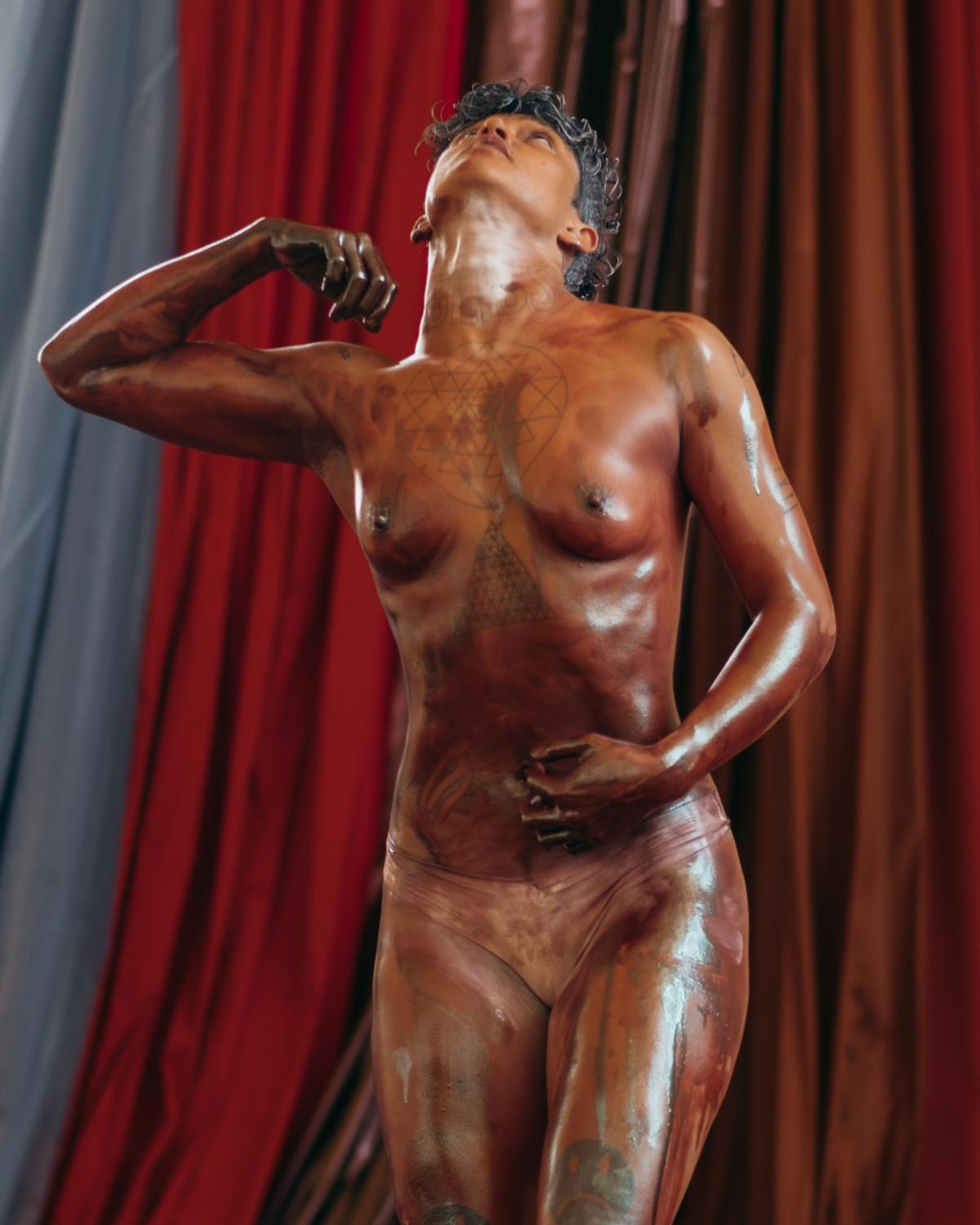 Boychild, Untitled Lip Sync (for Ana Mendiata), Martin Gropius Bau, photo: Ines Manai
Boychild, Untitled Lip Sync (for Ana Mendiata), Martin Gropius Bau, photo: Ines Manai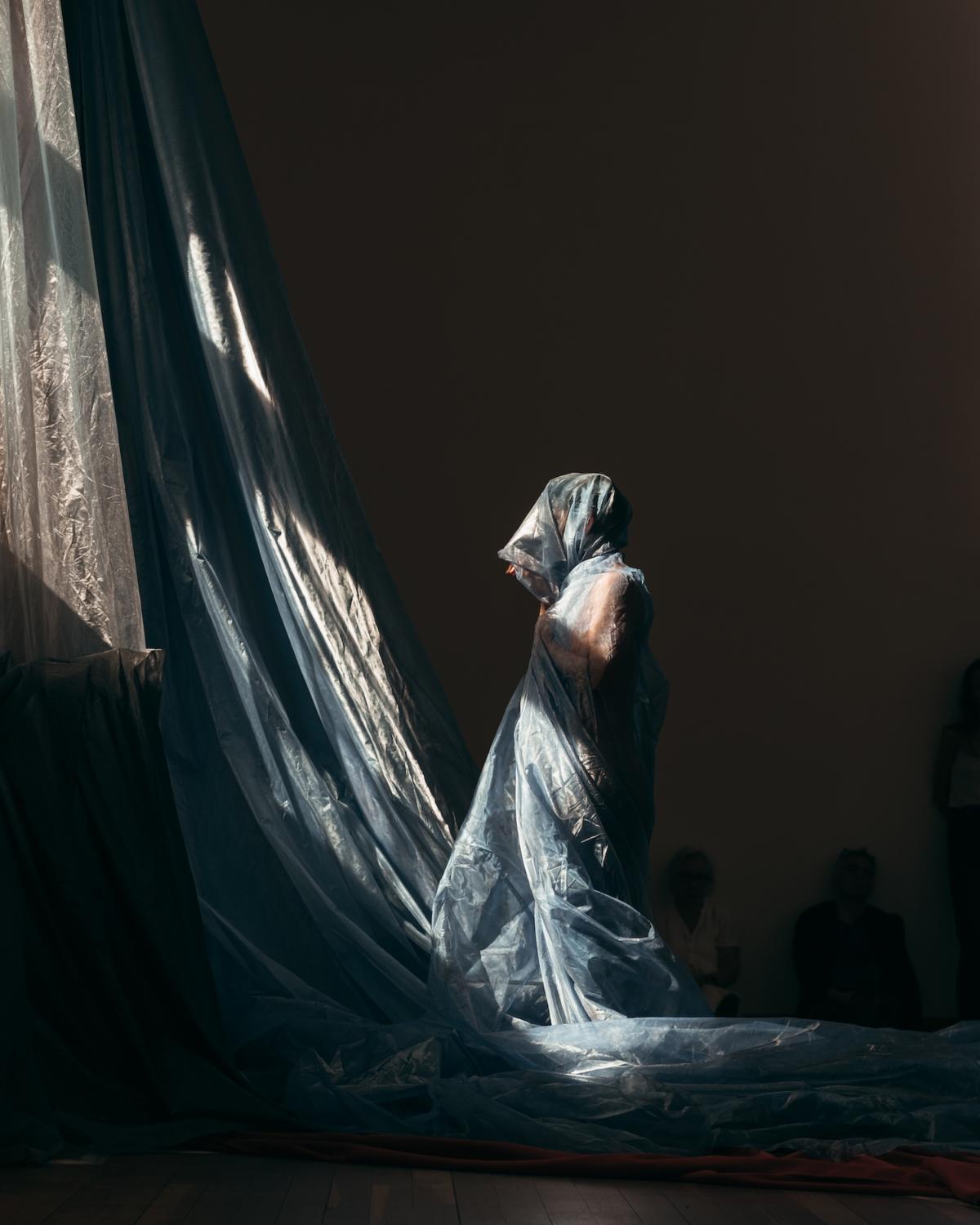 Boychild, Untitled Lip Sync (for Ana Mendiata), Martin Gropius Bau, photo: Ines Manai
Boychild, Untitled Lip Sync (for Ana Mendiata), Martin Gropius Bau, photo: Ines ManaiVenue
Artist/Activist Initiatives, Neuer Nachbarschaft
For most of 2018, I found myself going more regularly to project spaces and activist spaces rather than to official arts venues. One of these activist spaces was Neuer Nachbarschaft.
Neuer Nachbarschaft is not an exhibition space. However, in 2013, it was initiated by artist and activist Marina Naprushkina as a facility for people with refugee status or migrant backgrounds to gather, meet, and exchange skills and stories with a myriad of people also living in Berlin.
Naprushkina, who is from Belarus, has lived in Germany for a number of years. In the last year, her own work Deutsch für Asylbewerber (2016) appeared in Warsaw in the exhibition Neighbors in the festival Warsaw under Construction, and her The Constitution of Republic of Belarus (2012) was shown in Bratislava in the exhibition We the People, though her recent artistic production is not set on the exhibition model but the activist one.
Though Neuer Nachbarschaft is not an exhibition space per see, art regularly happens there. In November, an exhibition by its community members was held at Max Planck to showcase tapestries and drawings made addressing the idea of utopia. For the entirety of 2018, students of the Lensbased Class from the University of the Arts in Berlin held monthly screenings in the basement of the space, which is an expansive bowling alley. Also in November, Aliaxey Talstou held a talk on his work with the collective Human Constanta that works on issues of migration in Belarus at the border with Poland. During this talk, Agnieszka Kilian, a Polish curator based in Berlin who has done legal research on the topic and has curated works by activists Agata Stajer & Jasper Verlinden who extensively worked on this issue, shared some of her insights. Kilian reminded us that against EU law, the Polish border patrollers refuse to even hear the asylum claims of people crossing the border. Her book Dreams and Dramas: Law as Literature, a short collection of essays that came out this year, talked a lot about this doubling or liminal state that individuals enter into specifically on this border. Talstou gave a brief but detailed history of why people are seeking asylum at the Polish border, which is mostly to do with the aftermath of the war in Chechnya and the Ramzan Kadyrov regime that has made it unsafe for anyone who is found nonaligned with party values. It likewise becomes dangerous for people from Chechnya to be found seeking asylum at the Polish border and search warrants can be seen regularly in Brest.
The topic of Asylum on the Polish Border is an issue that is often little thought about within Berlin, where the border of the EU is regularly associated with the South rather than on the Polish front.
Disappointment
Post-internet hauntings
Berlin is city that has seen the rise and fall of post-internet art. Today, some artists have recognize reductive strategies and have turned to more social issues; however, I think a lot of artists or curators are still clinging to some aspects of this art form. Sometimes this ends up yielding a very astute criticism of capitalism or even trends within the artworld. Keren Cytter’s Video Art Manual (2010), recently shown at the Video Art at Midnight anniversary, is a good example of the use of slapstick web humor to critique the medium of arts video itself. But such magic is hard to replicate. 2018 also saw the resurrection of Anna Uddenberg’s twisted female mannequin sculptures– that often are perched on rolling suitcases holding selfie sticks– from the 9th Berlin Biennial into the exhibition Lucky at nGbk. Two years has not yielded the space time often grants us.
I still find it offensive among other things.
In Berlin, one also sees the exoticization of crypto currency and anything bitcoin related, which ends up yielding a very shallow conversation usually focused on explaining the mechanism rather than yielding any meaningful critique or societal changes.
Lastly, I hope to not encounter Ed Atkins’ work or presence in the flesh. Medieval CGI was not a good trend in 2018. It rather seems to have only appeared to invoke a crisis of white male fragility as was wisely noted by critic Mitch Speed in an article called Crocodile Tears on Atkin’s show at the Gropius Bau early 2018. It likewise perpetuates an image of male messianism, which signals a cruel return of the same predictable lame.
Vienna
Mirela Baciak
Artist
Anna Witt
In her artistic practice, Anna Witt intervenes into the social fabric and creates situations in which what is personal can be seen as political. This year her work was featured in numerous group shows, as well as two solo shows: Human Flag at Belvedere 21, and Das Radikale Empathiachat at Tanja Wagner Gallery. She has recently been awarded the 2018 Otto Mauer Preis.

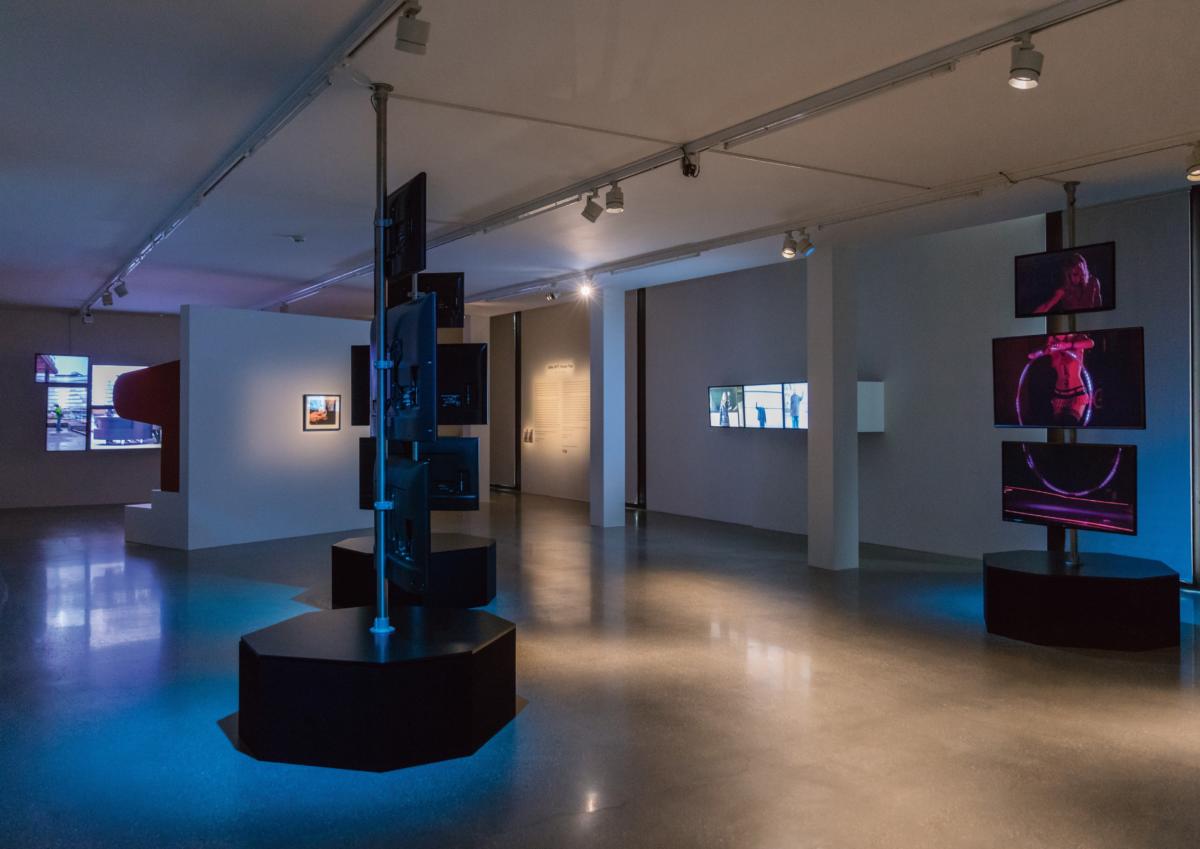

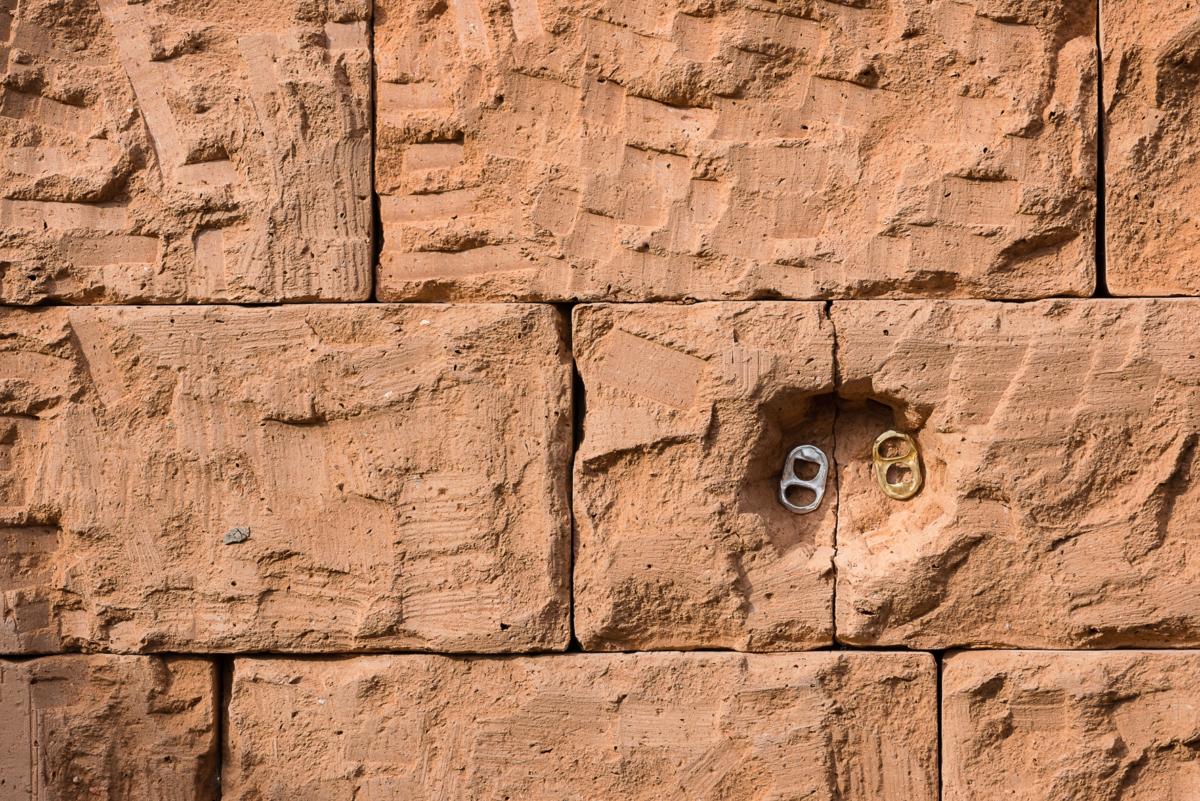
Curatorial duo
Significant Other / Laura Amann and Jen Kratochvil
Significant Other is a curatorial duo that is running a project space under the same name. In their curatorial practice, they merge expertise in contemporary art and architecture, while forging relationships that go beyond the usual politics of invitation. Their 2018 program at Significant Other was conceptualized following the logic of filling the void. They showcased a number of local and international artists, such as Wendelien van Oldenborgh, Jasmina Cibic, Haris Epaminonda, Klára Hosnedlová, Sonia Leimer. See: http://significantother.art/projects
Exhibition
Kate Newby, I Can’t Nail the Days Down at Kunsthalle Wien
As one entered the exhibition space of Kate Newby I Can’t Nail the Days Down, one stepped directly into the work. Her site-specific installation engaged to viewer to slow down and engage in concentrated inspection of the traces of the everyday, fragile elements and sculptures embedded in the brick floor that elevated the exhibition space. Utilizing the architecture of the glass pavilion and its surroundings, the exhibition created a poetic relation between the inside and the outside, transcending the limits of the exhibition space.
Venue
school
School is a place, a collective, a set of facilities and attitudes– one of the long-lasting project spaces in Vienna run by Andrea Lumplecker and Yasmina Haddad. Their focus lies in showcasing artistic practices that are countering the dominant narratives of contemporary art in Vienna. Their program is based on collaboration and conviviality, welcoming different formats of art presentation. See: http://www.weloveschool.org/
Disappointment
Double Lives. Visual Artists Making Music at mumok wien
After a line-up of good and daring exhibitions in 2017, mumok seems to be facing a regression to the mean. One of the most monotonous shows I‘ve seen this year was Double Lives, an exhibition dedicated to highlighting ‘‘the other side‘‘ of visual artists– their life as musicians. The exhibition compiled a number of music videos and documentary footage from concerts, creating rooms full of bright billboards deprived of connections to the actual role that music had on artists visual practice.
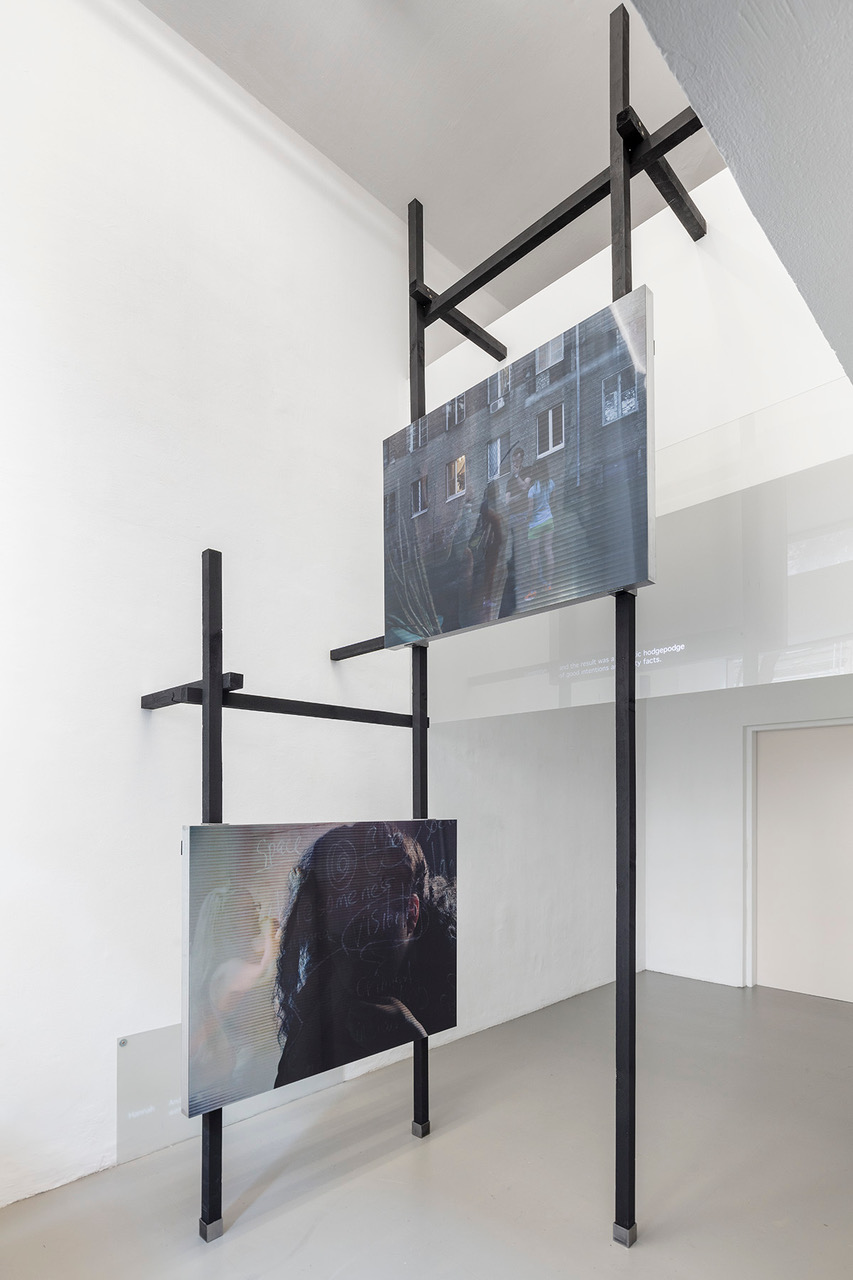
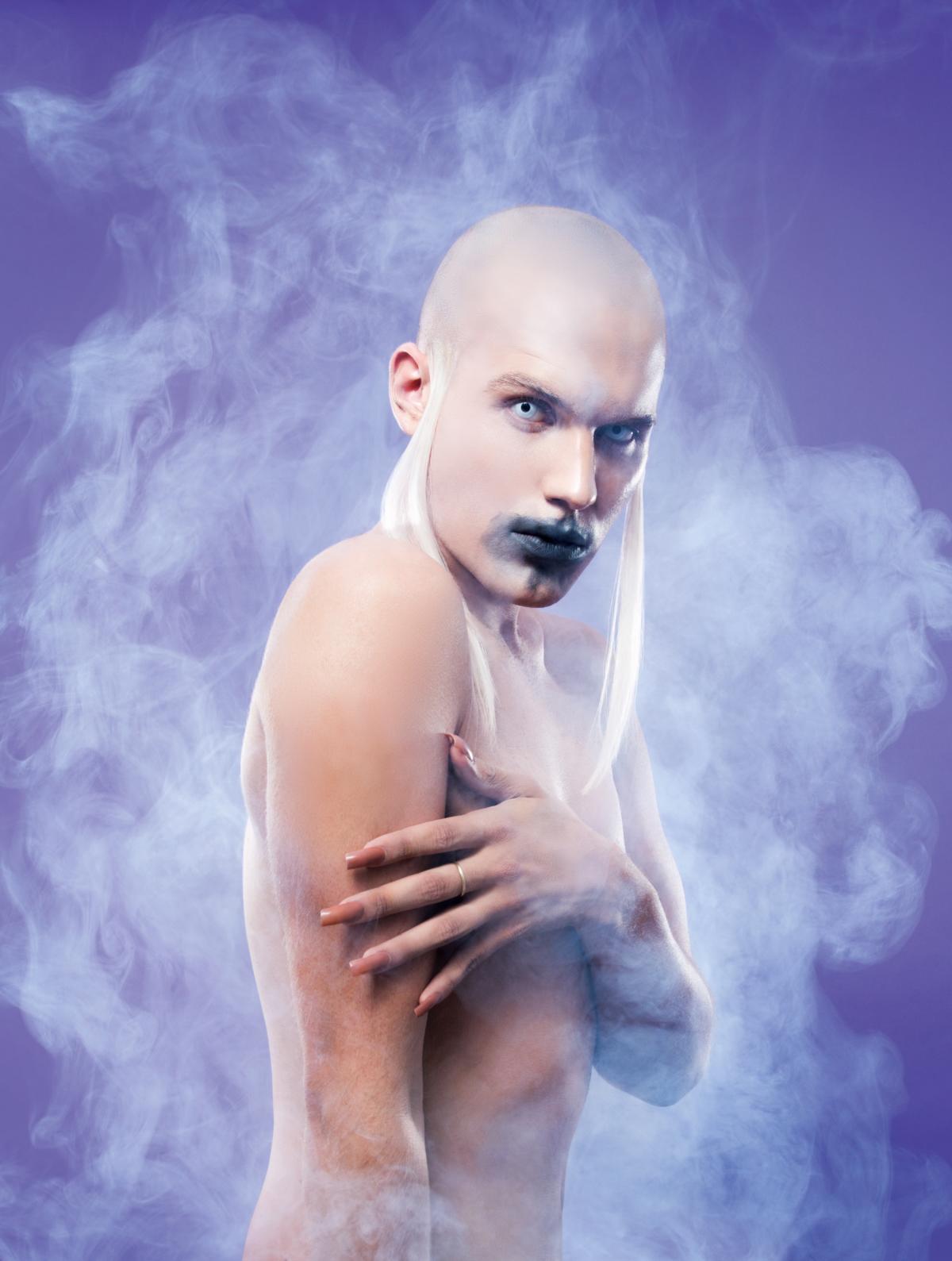
Latvia
Tomass Pārups
Venue
ALMA gallery, Riga
Having moved from its previous location in Riga’s Quiet Center to a new, compact, yet modern, sleek and, perhaps, more contemporary space in the heart of Riga, Alma gallery has already hosted a variety of exhibitions that represent an interest in a wide range of artistic practices.
Starting the previous year off with a solo-show by the emerging Latvian painter Zane Tuča, Alma then went on to incorporate performance art into this year’s program by arranging the first small-scale retrospective of the artist collective GolfClayderman. Then followed the first solo show of the artist Elza Sīle, whose unconventional and expanded approach to painting presented a potential shift in the way a new generation of Latvian artists could view the medium itself. Currently on view at the gallery – Sarmīte Māliņa’s solo-show “Tears” – a meditation on contemporary art’s reluctance to adress seemingly naive and personal struggles, set to the music of a well-known Latvian pop/rock group.
Alma has proven to be one of Riga’s leading contemporary art galleries – open to new forms of represantation and artistic practice, while carefully selecting the artists represented in the space and in art fairs abroad, such as ArtBerlin where the gallery showcased the work of artist Ēriks Apaļais last year.
Artist
Arthur Analts
The work of Latvian artist and designer Arthur Analts had previously earned the approval of professionals at home, but 2018 could be considered his year of triumph. Analts’ installation Matter to Matter earned the medal for Best Design at the 2018 London Design Biennale.
Taking inspiration from the natural environment of his homeland, Analts created an interactive wall of condensation, on which visitors of the expostion could leave fleeting messages, drawings and traces of their presence. The installation is a testament to the poetic representation of national curiosities. By adapting the enviroment of Latvia to his work, Arthur Analts did not adhere to banal, pseudo-romantic gestures – he merely condensed them into a minimal, understated piece.
Curator
Katerina Gregos
Although the local reception of the first Riga International Biennial of Contemporary Art was definitely not all together postive – with some of it’s critics pointing out a somewhat “colonial” approach in the rhetoric of its organizers – the work of its head-curator Katerina Gregos deserves praise.
Without getting into the concept of the Biennial itself, as well as the ideas represented in its exhibitions, I would like to solely highlight the work of Gregos as a curator. Not only did the debut of the Biennial stimulate the creation of new works by multiple Latvian artists, it also granted the public a unique opportunity to view works by world-renowned artists in the context of coherent and, for the most part, captivating group exhibitions that, as of late, seem to be irregular in Latvia.
Obviously praise goes out to the entire team responsible for organizing the Biennial, though the curatorial experience and drive shown by Katerina Gregos is easy to pinpoint as the most important component in making the whole thing work.
Exhibition
I find it near impossible to choose one exhibition that stood out this year as being overtly better than any other. I would rather name five examples than a singular exhibition:
1. Imants Tillers, Journey to Nowhere, Latvian National Museum of Art, Riga
2. Sarmīte Māliņa, Tears, Alma gallery, Riga
3. Jānis Avotiņš, Celebration, Vartai gallery, Vilnius
4. GolfClayderman, Lovestorm at the Golf Club, Exhibition hall “Arsenāls”, Riga
5. RIBOCA group show at the residence of Kristaps Morbergs, Riga
Disappointment
The Latvian centennial
2018 proved to be a year of sharp contrasts when it came to large-scale events that focused on art and culture. The plethora of exhibitions and events made possible by state funding granted ahead of the celebration of the Latvian centennial had redeeming qualities but mostly amounted to a celebration of entertainment culture and kitsch, profoundly highligted in the array of embarrasing concerts and performances included in the program.
Estonia
Indrek Grigor
Artist
Holger Loodus’s Journey to the end of the world is by far the weirdest and most ingenious take on the refugees crisis to be seen in Estonian art. The “Journey to the end of the world” presents a retro style of take on the refugee crisis by reflecting and mocking, in a sharp way, the average Estonian’s understanding of the crisis.
Curator
Peeter Talvistu curated the most boring show of the year. Trying to hide his failure, Talvistu titled the show the Aesthetics of Boredom, claiming that there is something special in boredom. He even organized together with Jaak Tomeberg an academic conference dedicated to boredom to prove his point.
You can’t fool me.
Venue
Artist/ curator/ critic Tanel Rander worked as part of the Estonia 100 Celebrations for two years from 2017 to 2018 in the Estonian-Latvian border town Valga, which is now the showcase of extensive alcohol tourism as vodka on the Latvian side of the street is remarkably cheaper then on the Estonian side.
Tanel tried to integrate within the local municipally museum in Valga a contemporary art program and failed. I had the chance to get a rather close look at what was going on, and I must say whenever one of your colleagues, friends or whoever else comes up with the idea to bring contemporary art to the periphery, tell them not to bother.
As part of his endeavor, Rander opened his own gallery, which he called Brīvibas – Latvian for freedom – as it was on the Vabaduse (Estonian for freedom) street.
Show
“Alice, Neeme & Jass” in Helsinki Taide Hall in Finland. Just believe me, I have seen the artists together and in solo shows, this is the best they have done. CAISM bure
CAISM = cryptochristian idiosyncratic minimalism.
Disappointment
The marginalization of the Visual Arts continues. Already in 2016 the Ministry of culture declared their position that the Cultural Endowment is, in respect to Visual Arts, not a source for project money, but as the main means of financing, they canceled the only support program by which exhibition spaces could apply for money outside of the cultural endowment system. 2017 saw Tallinn Art Hall being turned into a state institution as a final answer to the question on whether the state will support Visual Arts outside of the capital – no they wound, we have a state gallery now and that’s enough. In November 2018, the ministry attacked one more support program which supported – among other forms of culture – the export of exhibitions, making it now difficult, or rather impossible, for exhibitions, which as events don’t have any ticket profit, to fit the conditions in order to apply for support from the program to begin with.
Lithuania
Gerda Paliušytė
Artist
Elena Narbutaitė and her beautiful writing, collages and paper sculptures. Narbutaite’s work shows how the lightness of touch can be as important as the rationality of being.
Curator
Dovilė Grigaliūnaitė and Mantė Valiūnaitė for inviting the filmmaker Apichatpong Weerasethakul to Vilnius and organizing his solo show and film retrospective at Contemporary Art Centre.
Exhibition
“An Architect without Architecture?” an overview of artist and architect Valdas Ozarinskas’ work (1961 – 2014), curated by Virginija Januškevičiūtė. A sensitive tribute to one of the most interesting and ambitious Lithuanian artists of the 90’s.
Venue
Kazys Varnelis House-Museum – an extraordinary museum with abstract paintings by Kazys Varnelis displayed next to his collections of antiques from different ages. It is still one of the most contemporary and least conservative museums-venues in Lithuania.
Disappointment
Lazy, privileged art thriving on identity politics and the most vulnerable groups of people.
Belarus
Tania Arcimović
Artist
Sergey Shabohin
Sergey Shabohin started his artistic activity in the mid 2000s and became one of the key figures in the Belarusian art field for the next ten years. It was a time of artistic resistance and a struggle for new art institutions. During these years, Sergey Shabohin collected documents and artefacts, which represented his personal story as well as the story of that period in general. In February 2018 in Canteen XYZ gallery in Minsk, his solo exhibition 18 / Practices of Subordination opened when the artist presented works and installations, which worked also as an archive of the last ten years of Belarusian art.
From Anna Loktionova’s curatorial statement:
“The exhibition is the author’s museum of objects of fear, consisting of 18 parts. The artist created a temporary space for active travel through and careful study of personal barriers and mechanisms of power. Sergei Shabohin examines the processes of birth — functioning and decline in terms of concepts of corporeality, urbanism and political ideologies. The author doesn’t take the role of a teacher, but a guide who is offering you to “listen and think” the project through the prism of personal stories and state myths”.
Also together with Belarusian philosopher Olga Shparaga, I would like to mention a new name in the art scene this year – artist Alena Hil (instagram-profilе @helen_hil). Her first solo exhibition titled 365 Self-Portraits was presented in Prastora KH in Brest (curator Liza Mikhalchuk) and in Minsk during Belgazprombank features Salon d’Automne-2018 where she won a prize.
Curator
Andrei Dureiko and Maxin Tyminko, ZBOR In Progress
Andrei Dureiko and Maxin Tyminko are artists who were born in Minsk but have spent the last fifteen years abroad. From time to time, they initiate and curate artistic projects in Belarus. In the last years, Andrei Dureiko has created an archive of Belarusian contemporary art abroad.
The exhibition ZBOR In Progress happened on October-November in Ў Gallery of Contemporary Art in Minsk and became one of the important art events, which was anticipated for about two years. The story of the exhibition started in 2014 when a group of artists and curators created KALEKTAR platform. The aim was to collect and present the history of contemporary art in Belarus over the past thirty years, which is mostly still not present in state culture institutions. This archive should become a base for the future collection of Belarusian Contemporary Art Museum. Before being presented in Minsk, the exhibition was presented in Białystok (2015) and Kiev (2016).
From Curatorial statement:
“…During the selection of works the main task was to identify the most important trends and reveal the widest possible representation of the strategies used by Belarusian artists of different generations in their artworks. More than 150 works were selected by 35 experts in the field of contemporary Belarusian art including artists, art critics and journalists after the survey so as to compose the online collection. […]
The exhibition in Minsk ZBOR. In Progress includes more than two hundred exhibits: documentary photographs, research essays, as well as original works of Belarusian artists created in the period from the late 1980s up to the present days. An essential part of the exposition is a media presentation, which includes original video works by more than twenty authors, as well as rare documentary videos of a number of performances and art events, and unique reconstructions of installations”.
Exhibition
Israel Basov, Wisdom has built her house…, The National Art Museum of the Republic of Belarus
Israel Basov is Belarusian artist who is one of the most important figures in Belarusian Modern Art in the 20th century. He worked from the 1960s to the1990s and was banned by the Soviet culture ideology because of the modernism style of his works. During his life, he had no solo exhibition, and even after the USSR collapsed, his memory is slow in entering Belarusian society. The exhibition in The National Art Museum is a very important step in making the artist present in culture memory. The success of the exhibition was so great that the museum continued it for a month long.
From Ekaterina Izofatova’s curatorial statement:
“The art of Israel Basov caused a lot of controversy during his life. Despite his membership in the Union of Artists of the BSSR, for many years the master was doomed to creative loneliness. The formal boldness of his painting, the liberation from the social didactics of socialist realism determined his extremely sparse participations in exhibitions and absence of solo exhibitions. Only after his death the artist was recognized as one of the most prominent and talented masters of Belarusian art. […]
The exhibition features over 60 paintings and graphic works from the collections of the National Art Museum of the Republic of Belarus, the National Polack Historical and Cultural Museum-Reserve, the Belarusian Union of Artists, the Belarusian State Archive-Museum of Literature and Art and the artist’s family collection. Many works will be exhibited for the first time”.
Place
Zair Azgur Memorial Studio in Minsk. Director Oksana Bogdanova
Most of Belarusian state culture institutions are still very conservative and closed to new formats and interdisciplinary approaches. Zair Azgur Memorial Studio is unique in this sense. On the one hand, it has an impressive collection of Soviet realism sculptures by famous Belarusian Soviet sculptor Zair Azgur. On the other hand, the director Oxana Bogdanova opens the museum space to every format– experimental music concerts, performances, exhibitions, cinema screenings etc. In the context of the studio collection, these events get a new conceptual dimension and create a museum of unique interdisciplinary formats.
Disappointment
The policy of Ministry of Culture of Belarus. There are no clear concepts of the culture policy, no open competitions, no open grants, no desire for dialogues with artists, and there is no professional contemporary art education program etc. Often, artists and culture workers say that what they do is more likely to be against the values of the Ministry of Culture. But it is also a reason that a lot of artists leave the country because there is no chance for them to realize their careers here.
Ukraine
Oleksiy Radynski
Artist
Oleg Sentsov
A Crimean filmmaker who is serving an illegal 20-year prison sentence in a Russian labor camp this year had enormously raised the bar on civic commitment and artistic integrity. His 145-day-long hunger strike, in which he demanded the release of all political prisoners from Ukraine currently held in Russian jails, will go down into history as an ultimate act of artistic resistance. Most importantly, Oleg Sentsov managed to survive his hunger strike without compromising his stance: he had cancelled the strike only when faced with a prospect of enforced feeding at the prison hospital. In the meantime, Sentsov has been working on his new film which is now being produced in Kyiv, via mail correspondence with the author.
Curator
Volodymyr Dedov
This man is off the radar of the artistic milieu, and he has, in fact, never curated a show of Contemporary Art. In the case of Volodymyr Dedov, I’m rather speaking about the original and most crucial meaning of the term ‘curator’ – the one who takes care of truly significant artworks.
A senior research supervisor at the State historical and architectural reserve in Sviatohirsk, Donetsk region of Ukraine, he is in charge of the renovation of one of the most outstanding existing artworks of Soviet Ukrainian avant-garde: a large-scale Cubist monument by Ivan Kavaleridze, built in 1927 and depicting the Communist leader Artem. This piece is now endangered as a result of years of improper treatment, as well as by Ukraine’s phantasmagoric ‘de-communization’ policies that led to the destruction of hundreds of pieces of monumental art created from 1920ies to 1980ies.
Due to its cultural status, the Artem monument by Kavaleridze is technically not subject to demolition. However, when the news of its long-awaited restoration finally broke this year, the Ukrainian Prime Minister demanded an investigation into why this monument is being taken care of, rather than demolished. The only hope is that the man in charge of this artwork and his team will not give in to governmental blackmail.
Place
86 Festival, Slavutych
On its fifth year of existence, the 86 Festival of Film and Urbanism in Slavutych had firmly inscribed itself into an annual artistic agenda in Ukraine. This year, apart from the film competition itself, the festival had organized a program of artistic interventions into the city curated by METASITU collective (Liva Dudareva and Eduardo Cassina). This program included months-long cooperation with local residents, followed by the construction of public space in a huge abandoned pit in the town center, a disco in the town’s sewers and many other activities. Sadly, by the end of the year the organizers of 86 Festival had announced that its next year’s edition may be cancelled because of corruption in the Ministry of Culture that co-finances the event. Going public with such a statement is nearly unprecedented for cultural institutions in Ukraine (hopefully others will follow suit).
Exhibition
Soot by Andriy Rachinskyi and Daniil Revkovskyi at Artsvit Gallery, Dnipro
Rachinskyi and Revkovskyi are an artist duo from Kharkiv who combine the practices of (offline) urban flâneurs and (online) web surfers, doing artistic research on postindustrial urban environment and the impact of social media on its inhabitants. For their solo show at Artsvit Gallery in Dnipro, they had produced a found footage film that is possibly one of the most striking documents of post-industrial, social devastation, as seen by its subjects themselves (and thus devoid of an exoticizing gaze of an outsider). For this film (now published online) the artists had assembled a vast amount of labor-related accidents filmed by the workers themselves and uploaded onto their social media accounts. At the show, the film was supplemented with a harsh and extremely precise self-criticism of ‘socially engaged art’ in Ukraine: a series of gigantic one-letter murals on the city walls scattered around the city. When taken together, they form a word play that could be translated as: ‘WE FUCKED UP’ / ‘WE’VE LOST OUR FUCKING WAY’.
Disappointment
Debate on the Ukrainian pavilion at the Venice biennale
Ukrainian participation in the Venice biennale has been mired by all sorts of scandals since the moment when Ukraine’s very first national pavilion was set up in 2001. But this year’s grim showdown has gone beyond all expectations.
For the next year’s biennale, the jury had selected a project by the artistic collective Open Group, which proposed to fly a Ukrainian An-225 Mriya aircraft, the largest strategic airlifter ever built, over Venice on the biennale’s opening day (with the artwork itself being the shadow cast by the aircraft over Giardini). When the jury’s decision was announced, the painter Arsen Savadov, whose project came in second, went public with an extremely bizarre press conference where he was, among other things, threatening to ‘make a phone call to president Poroshenko’ to change the jury’s decision, and bragging about publications by MoMA in New York that showcase his work (the publications mentioned by Savadov do not in fact exist). It’s hard to say what is, in fact, more outrageous: Savadov’s press conference itself, or his proposed project, which was supposed to reenact a tour that Marilyn Monroe gave in the 1950s in support of US soldiers in South Korea, for the Ukrainian troops in the Donbas.
The real problem is that, according to the regulations, in case the winner project for Venice is cancelled for whatever reason, the project that won the second place automatically goes to Venice. We’ll see if Savadov or anyone in his circle are in fact able to make that happen.
Poland
Adam Mazur, Karolina Plinta, Piotr Policht
Artist
Alex Baczynski-Jenkins – one of the most famous artists of contemporary Polish performance art, and indeed not only Polish. Co-founder of Kem, a very active event & performance art platform which always revives the Warsaw art scene. His choreographic project presented at the Foksal Gallery Foundation this year enjoyed immense popularity on Polish instagram, provoking a discussion about the nature of contemporary performance art. And we cannot wait for his upcoming solo exhibition at the Kunsthalle Basel next year.
Joanna Piotrowska – To say that Joanna Piotrowska is a photographer and shoots black and white pictures is tantamount to saying nothing. Gestures, emotions and situations implied by Piotrowska’s art first captivated London audiences. In 2018, she presented her works with success at exhibitions at MoMa, at the Berlin Biennale, and will be soon participating also at the Kunsthalle Basel. Nevertheless the artist does not lose contact with the Polish art scene, regularly showing her works in the gallery of Dawid Radziszewski.
Curator
Joanna Warsza, associated with Berlin and Stockholm on a daily basis, has proved herself best as a city curator. In 2018, she showed how one can get into Munich. This is a Polish curator who proves that one can do an international event without generating debt and hate.
Exhibition
Friend of a Friend is a new mini-art fair in condo type, which took place in April in Warsaw. Indeed FoaF brought some fresh air into the hermetic gallery scene of Warsaw, so we hope that its first edition will not be the last one.
Skip the Line! The exhibition of Stach Ruksza and Kuba Gawkowski organized as part of the Biennale Warsaw fits in with the hot political climate of Central Europe. The authors problematize the issue of populism without giving up the quality of art. What a strong and courageous statement considering the poor condition of frightened, conformist national institutions.
Venue
The situation in Polish public institutions leaves much to be desired – the National Museum in Warsaw joined the group of places whose future seems gloomy after the appointment of the new director. At the end of the year, Piotr Rypson was dismissed from his post. Admittedly, it was done in an unusually elegant – and above all in breach of labour laws – style. In this context, one must admit that the most interesting things happen outside public institutions. For example, in Limanka Fashion House in Łódź – which is not even a gallery, but simply the apartment of several young artists whose activities take place at the intersection of visual arts and fashion. One of them is the photographer Kacper Szalecki, who, as a talented photographer, became known as a twenty-year-old author of the Olimpia’s Diary series of photographs, depicting Poland as one big scenery associated with second-hand shops. This year we can see in the spotlight the second member of the colourful Łódź collective, Tomasz Armada, a fashion designer who literally uses second-hand materials, transforming them into spectacular Haute Couture.
Disappointment
2018 in Polish art meant the broad variety of exhibitions centered around the celebrations of the 100th anniversary of Poland regaining independence. The Ministry of Culture and National Heritage has allocated a separate budget for celebrating this anniversary, thanks to which more and more exhibitions connected with the celebrated anniversary have been organized during the whole year. Some institutions in this country approach the subject more obsequiously, others react more critically, but the whole situation is definitely difficult to digest. However, obsession with the subject of Polishness is a Polish speciality, and we do not have to prove it indefinitely.
Curator of one of the best anniversary exhibitions Shouting ‘Poland!’ at the National Museum in Warsaw, just over a month after its opening, was dismissed from his post by the new director of this institution. Apparently, exaggerated up-to dateness can be harmful to patriotism.

